Horses
Topic with 415 items
|
Title
|
Images
|
Item Comment
|
Prefix
|
Number
|
In set
|
Set
|
Set Comment
|
Type
|
Artist
|
Author
|
Size
|
Topics
|
Set Covers
|
Reference
| |
|---|---|---|---|---|---|---|---|---|---|---|---|---|---|---|---|
| 321 |
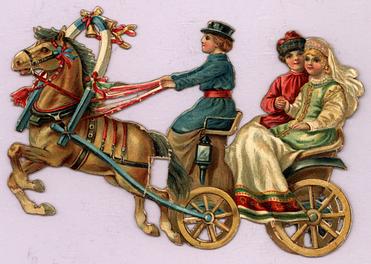

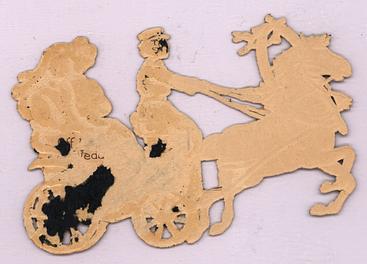

|
brown horse pulls a cart driven by a boy in a blue suit, a loving couple sit in the back, not marked as ROYAL ART NOVELTY but fits with the set, only part of the piece, not complete
|
|
227
|
|
listed in the RAPHAEL TUCK & SONS' LTD. CHRISTMAS & NEW YEAR catalogue 1904 / 1905 on page 144. Titled SUMMER AND WINTER DRIVES and described as having CHARMING CHILDREN, DASHING HORSES, six designs per box.
|
|
|
6 x 4 in.
|
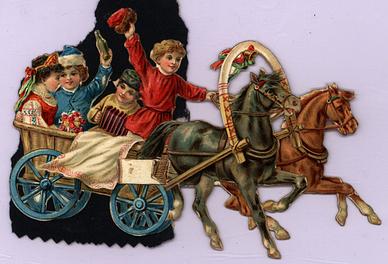
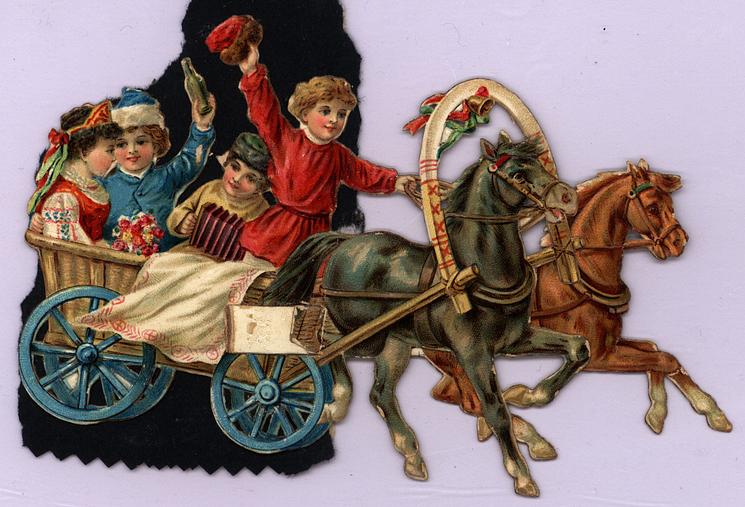
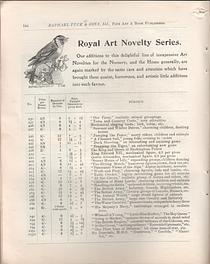

|
| ||||
| 322 |
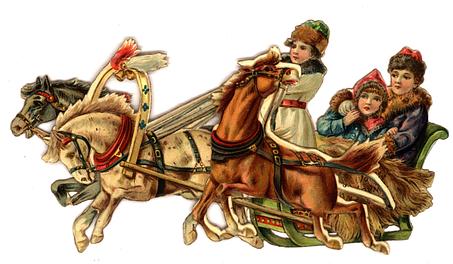
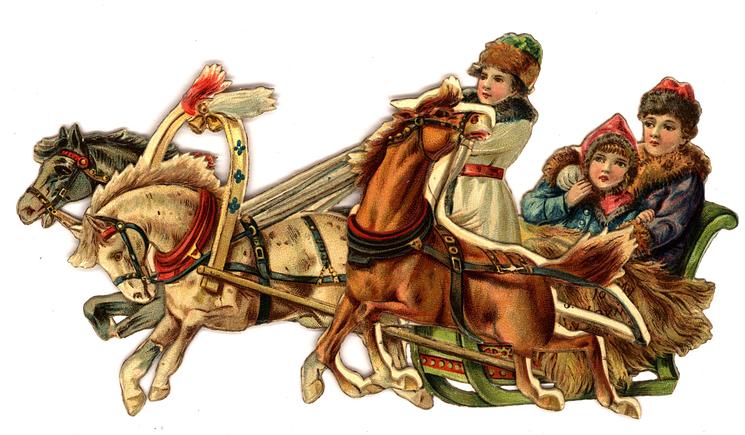
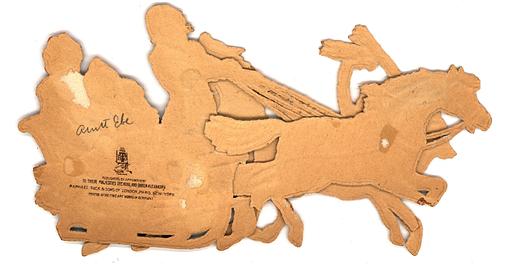
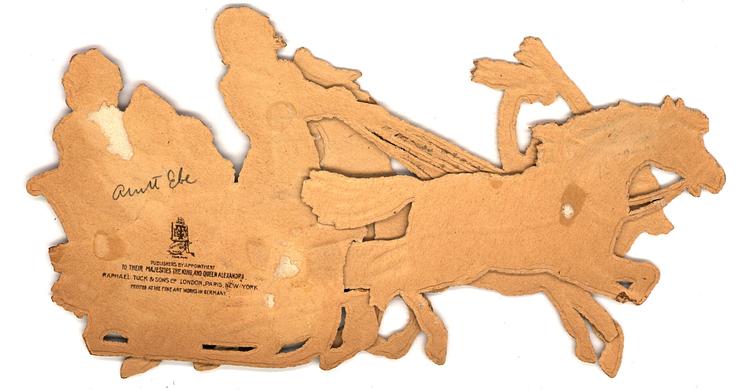
|
three horses pull a sleigh being driven by a young boy standing and dressed in white, a mother and a little girl sit in the back, not marked as ROYAL ART NOVELTY but fits with the set
|
|
227
|
|
listed in the RAPHAEL TUCK & SONS' LTD. CHRISTMAS & NEW YEAR catalogue 1904 / 1905 on page 144. Titled SUMMER AND WINTER DRIVES and described as having CHARMING CHILDREN, DASHING HORSES, six designs per box.
|
|
|
6 x 4 in.
|




|
| ||||
| 323 |
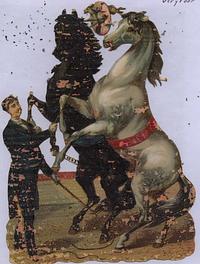
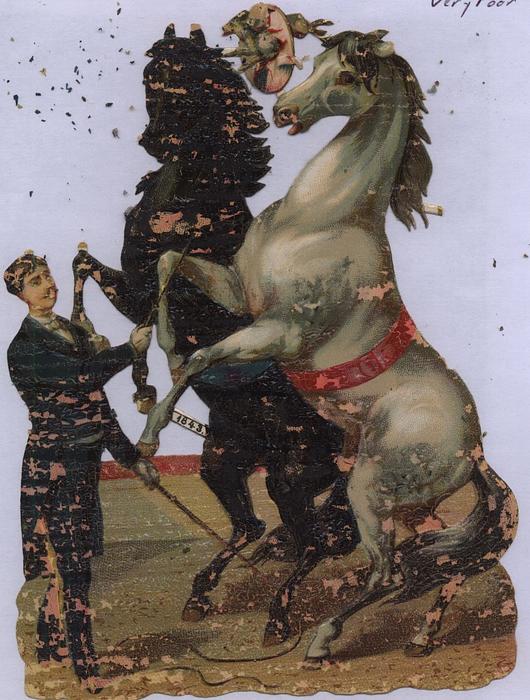
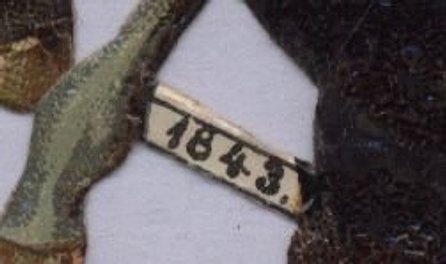
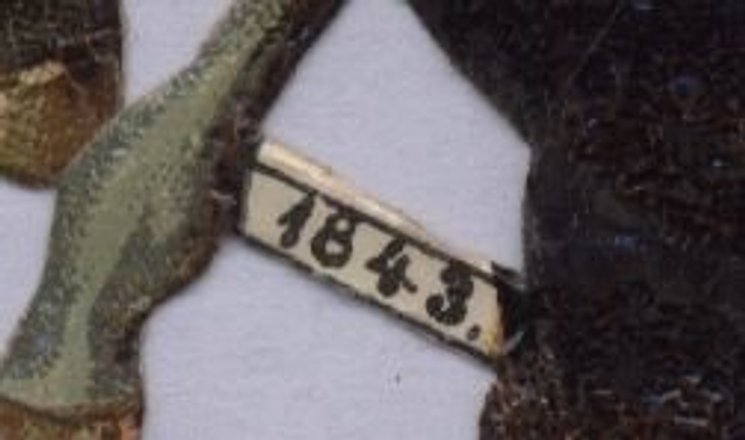
|
printed number in brown on white tabs, probably an individually numbered series, very poor condition
|
|
1843
|
|
|
|
|
11.5 x 15 cm
|
|
| ||||
| 324 |
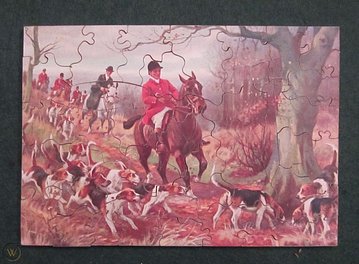
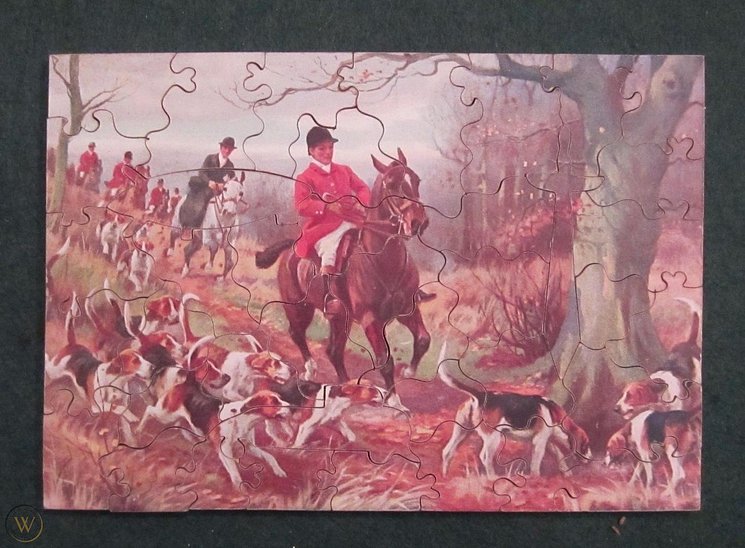
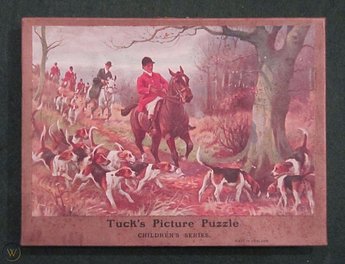
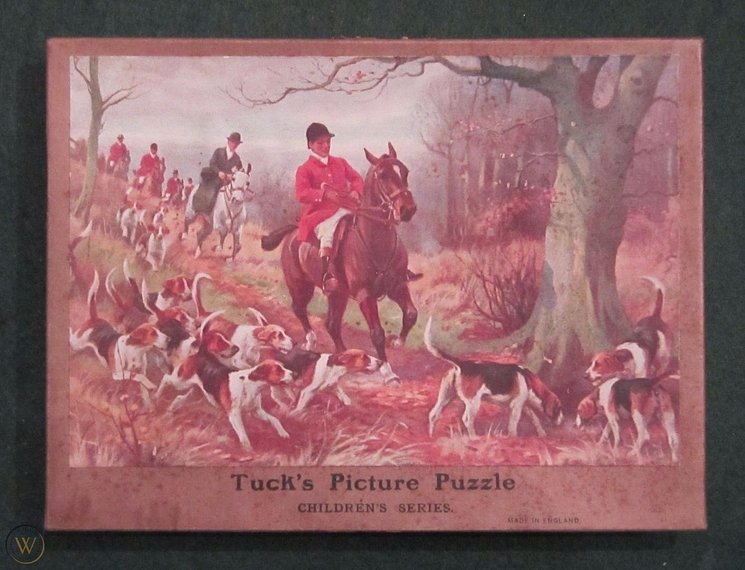
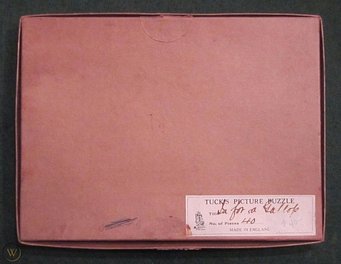
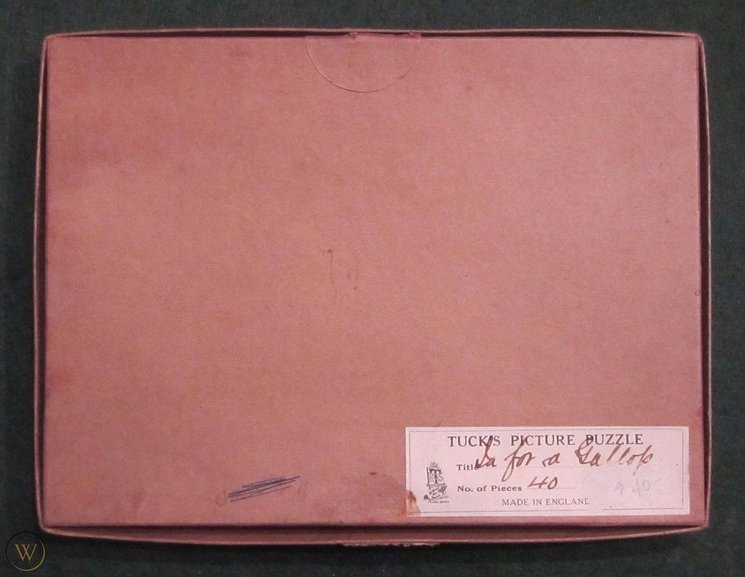
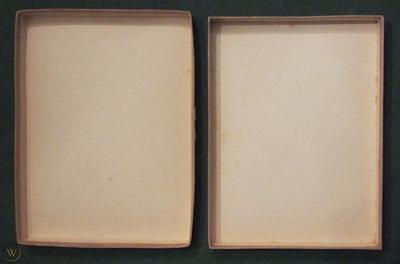
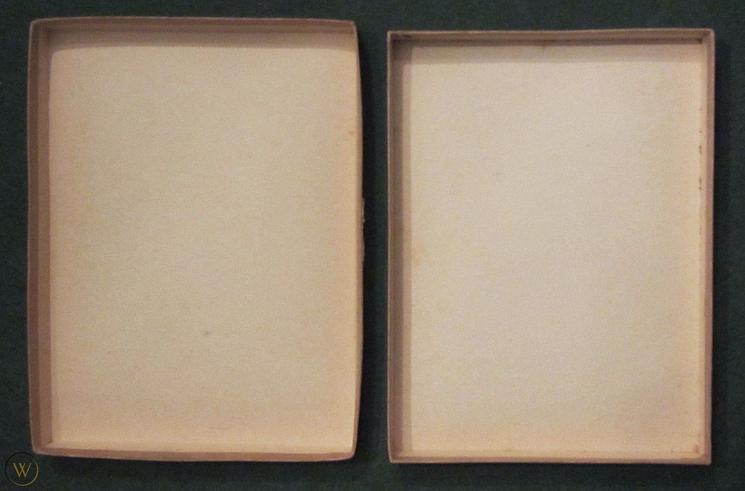
|
40 PIECES. some figurals
|
|
|
|
MADE IN ENGLAND
|
|
|
7 x 5 in.
|
|
| ||||
| 325 |
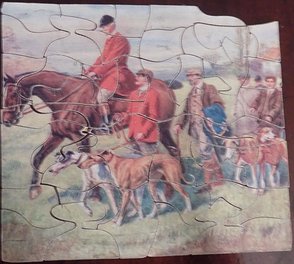
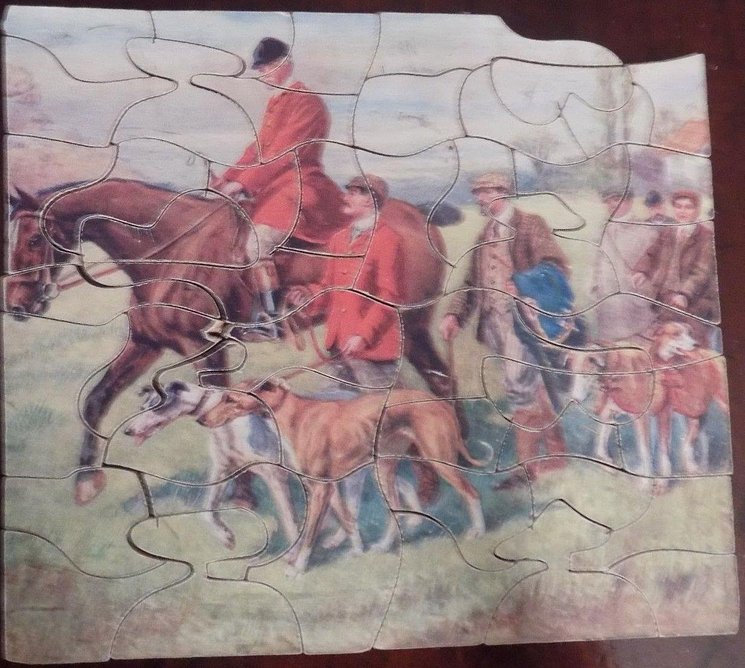
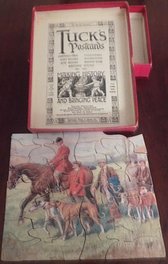
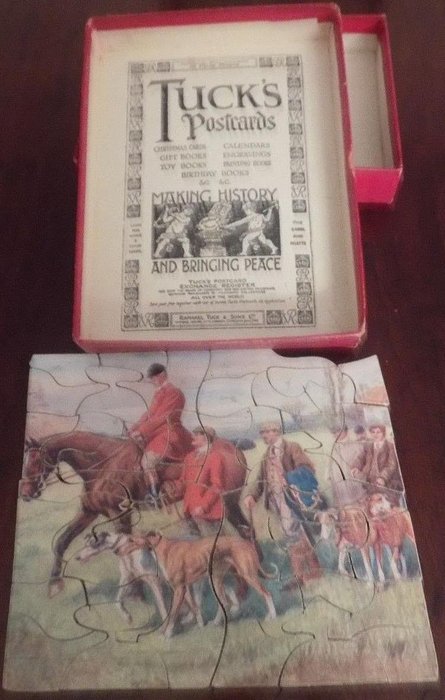
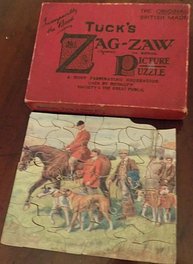
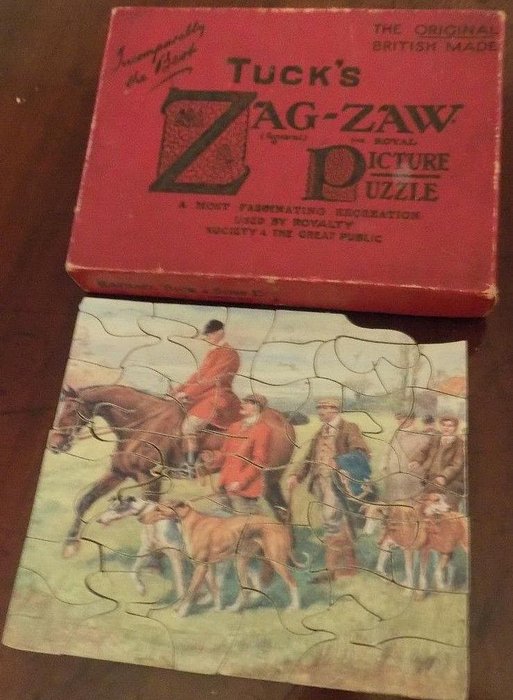
|
about 35 pieces, more info needed
|
|
|
|
Zag-Zaw line of puzzles was first produced in 1909, all incorporate figurals or whimsies, sold in red or orange boxes with labels on the side or bottom of the box, most without guide pictures. Initially cut non-interlocking but by 1930's became more so. Puzzles have a different cuts so that the same image will come in several versions which means that missing pieces can not be taken from other puzzles with the same image. See also Bob Armstrong's website on old jigsaw puzzles
|
|
|
6 x 5 inches
|
|
| ||||
| 326 |
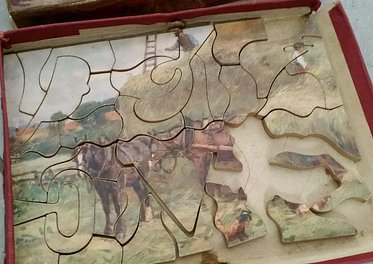
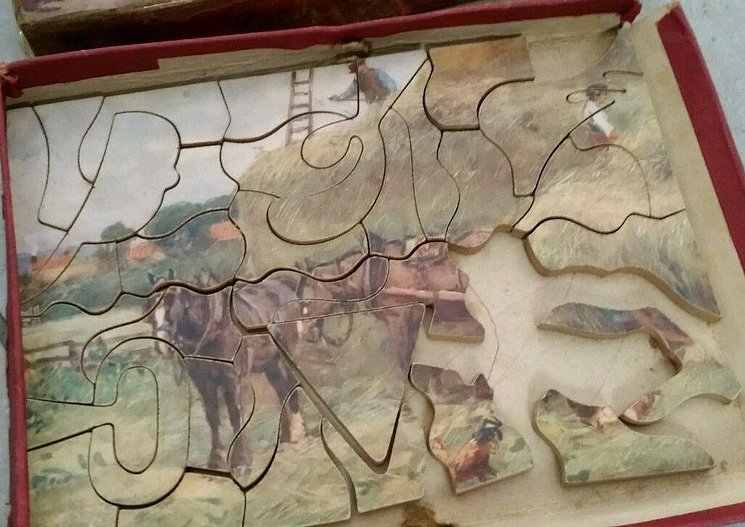
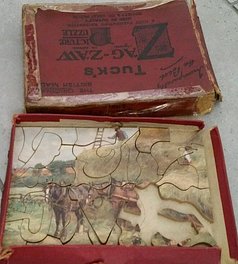
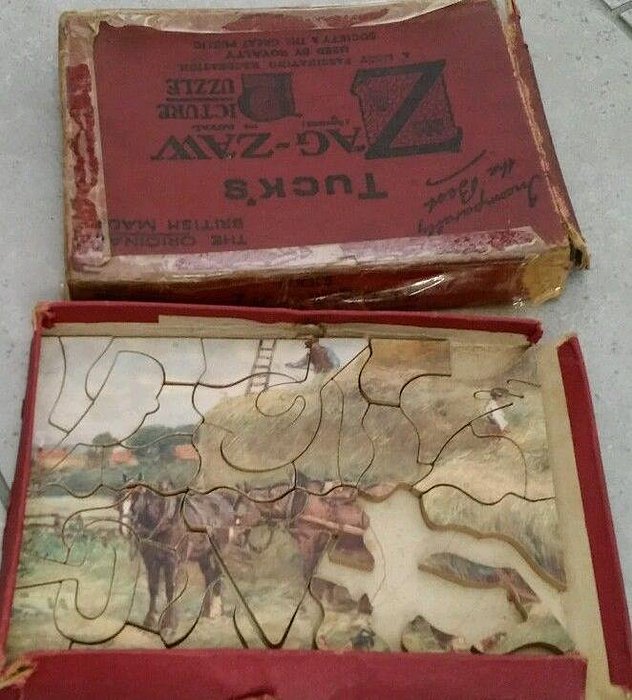
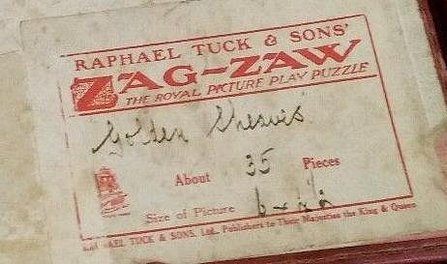
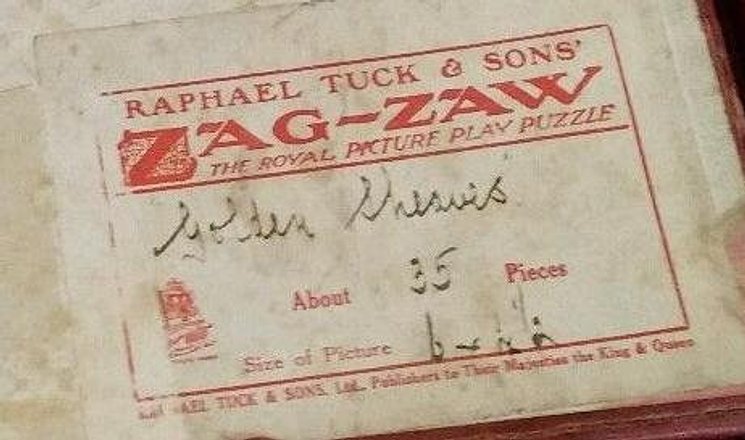
|
about 35 pieces
|
|
|
|
Zag-Zaw line of puzzles was first produced in 1909, all incorporate figurals or whimsies, sold in red or orange boxes with labels on the side or bottom of the box, most without guide pictures. Initially cut non-interlocking but by 1930's became more so. Puzzles have a different cuts so that the same image will come in several versions which means that missing pieces can not be taken from other puzzles with the same image. See also Bob Armstrong's website on old jigsaw puzzles
|
|
|
|
|
| ||||
| 327 |

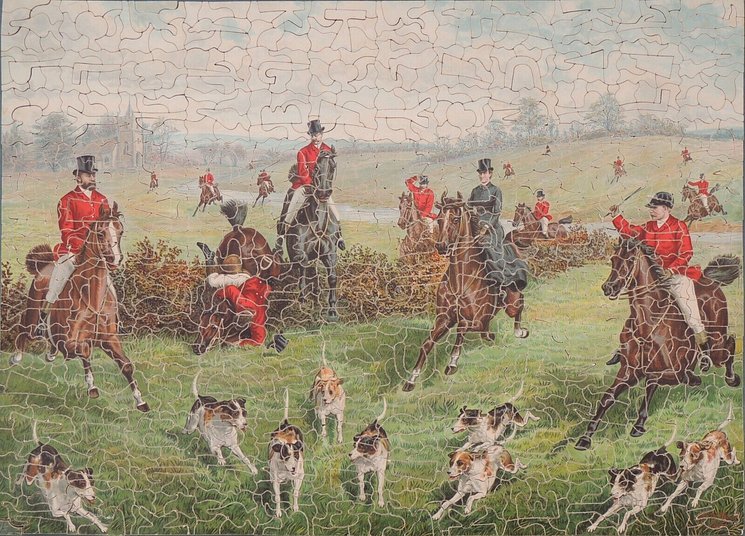
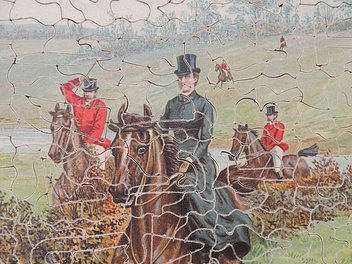
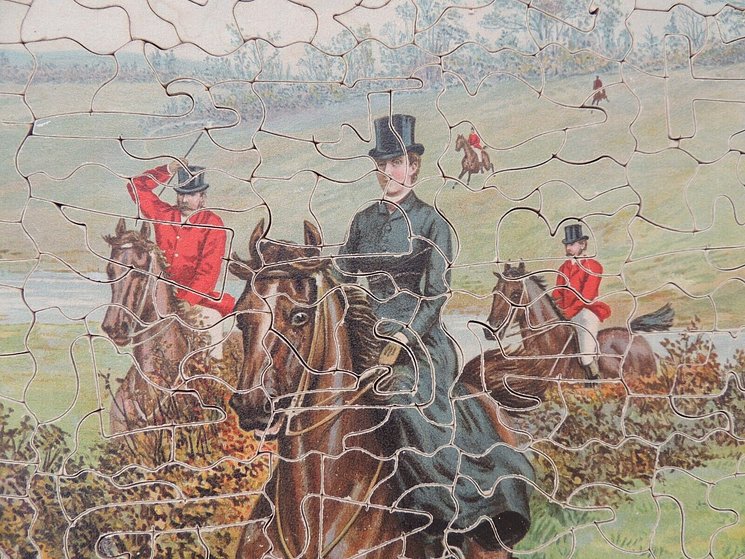

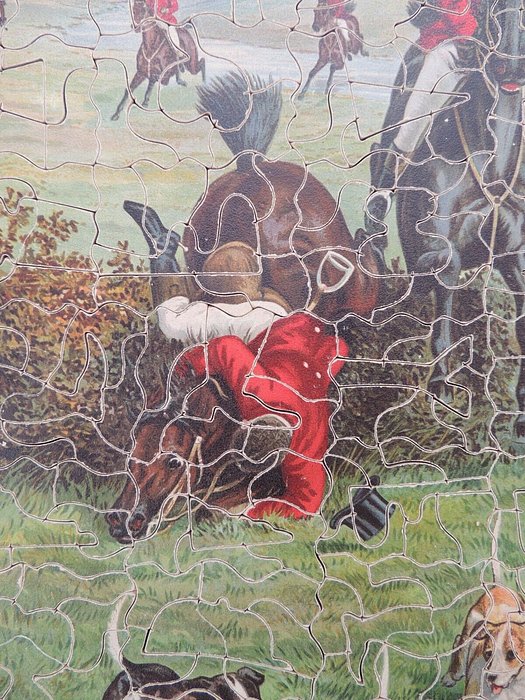

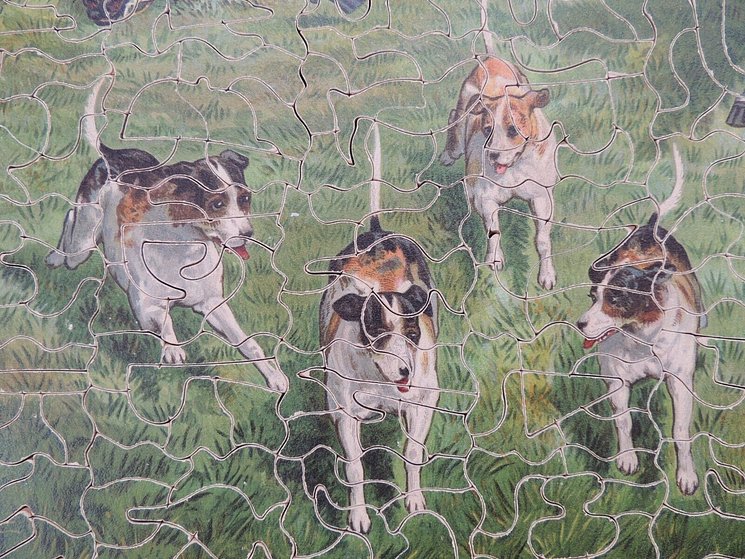


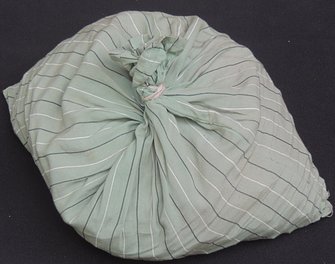
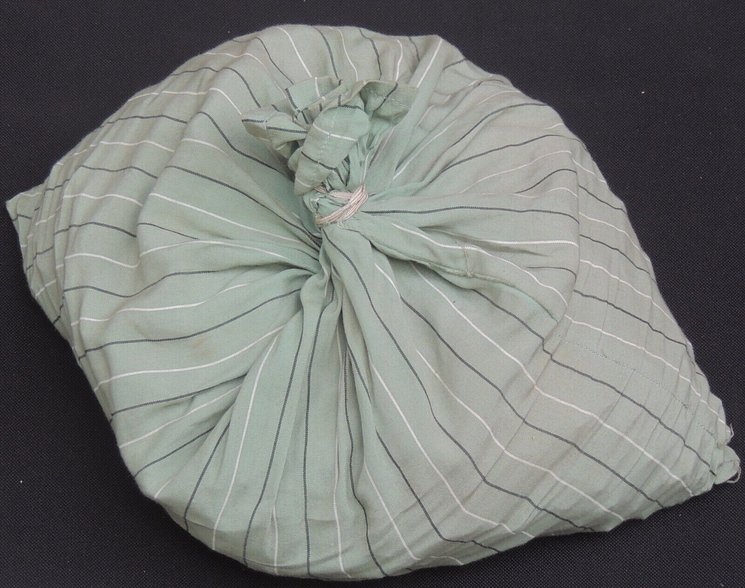
|
1000 pieces with one piece replaced, chew marks to two pieces, and a few missing nibs or paint color missing, no box, push fit style, listed and described in the catalogs, comes in a cloth bag and not a Tuck box
|
|
|
|
Zag-Zaw line of puzzles was first produced in 1909, all incorporate figurals or whimsies, sold in red or orange boxes with labels on the side or bottom of the box, most without guide pictures. Initially cut non-interlocking but by 1930's became more so. Puzzles have a different cuts so that the same image will come in several versions which means that missing pieces can not be taken from other puzzles with the same image. See also Bob Armstrong's website on old jigsaw puzzles
|
W.H. HUNT
|
|
31 x 23 in.
|
|
| ||||
| 328 |
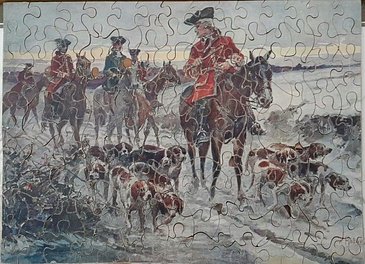



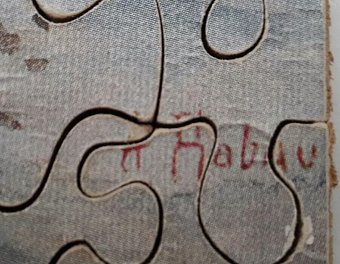
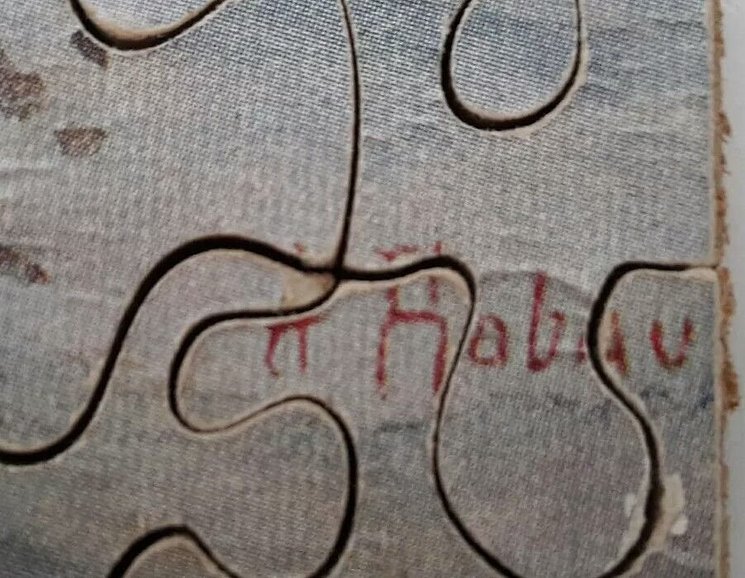
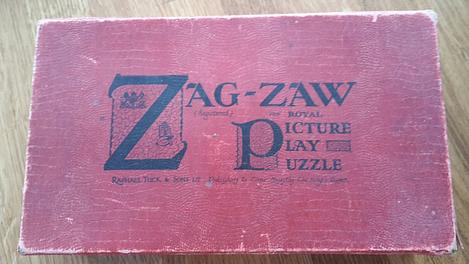
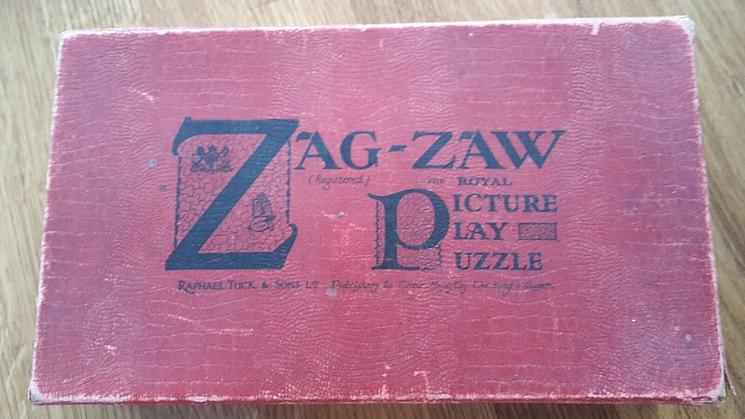
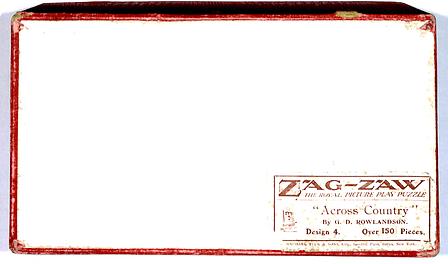
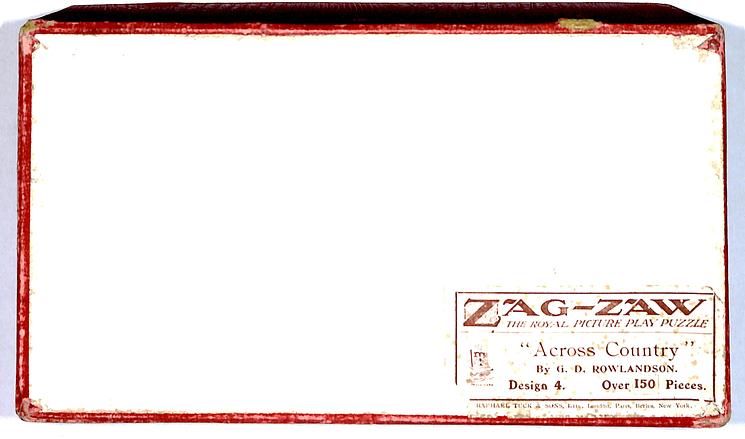
|
OVER 150 PIECES, DESIGN 4, wooden, wavy line style cut, interlocking, with box, eight broken nibs, some glued back together and some missing, box may not be correct as puzzle is signed A HABAV and not G.D. ROWLANDSON. also the style is different than Rowlandson
|
|
|
|
Zag-Zaw line of puzzles was first produced in 1909, most incorporate figurals or whimsies, sold in red, orange, or occasionally green boxes with labels on the side or bottom of the box, most without guide pictures. Initially cut non-interlocking but by 1930's became more so. Puzzles have a different cuts so that the same image will come in several versions which means that missing pieces can not be taken from other puzzles with the same image. The puzzle labels are often hand written and come with minor variations in titles and details. Some have a DESIGN category on the label. From my readings this refers to the style of cut, wavy lines, figurals, etc. See also Bob Armstrong's website on old jigsaw puzzles
|
see above note
|
|
10 3/4 x 8 in.
|
|
| ||||
| 329 |


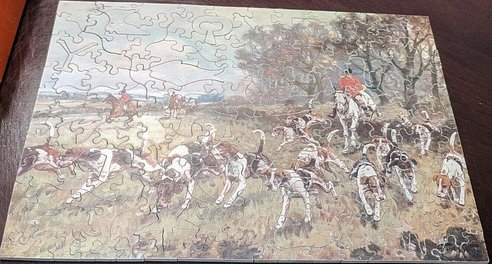

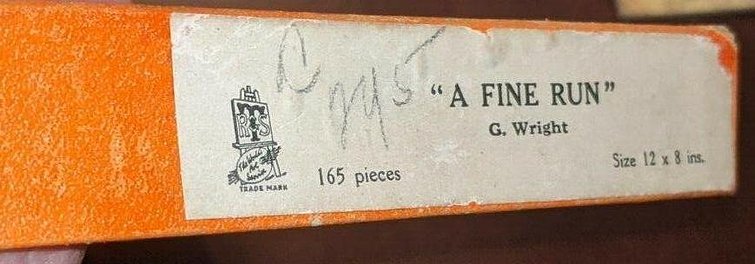
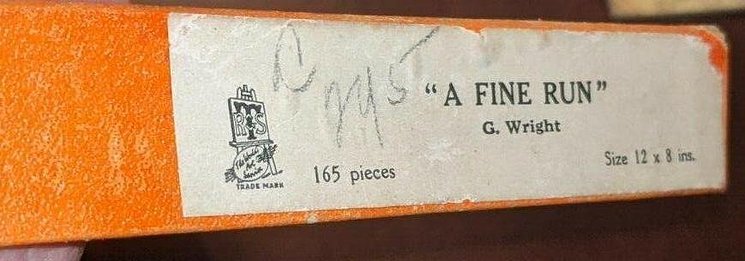

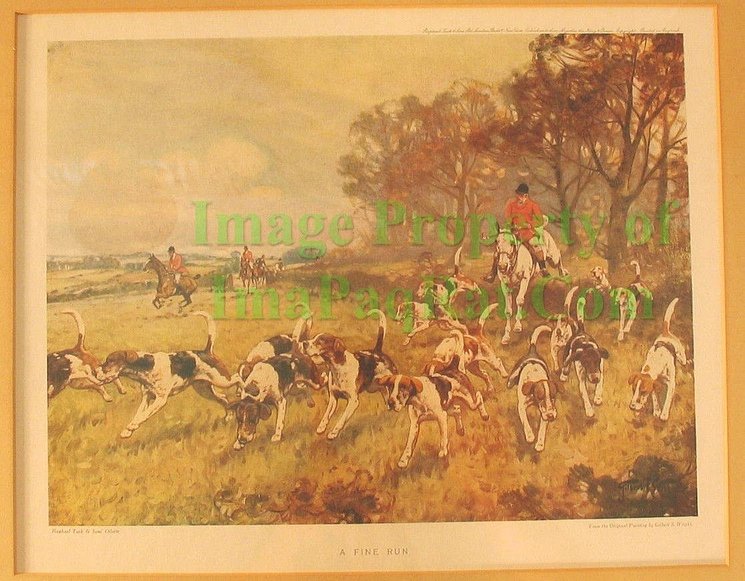
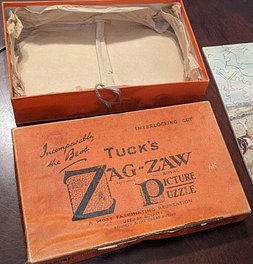
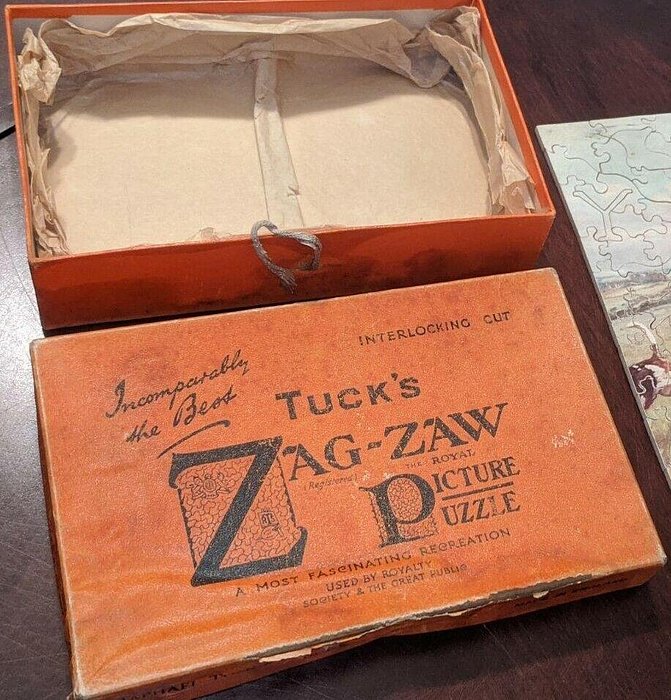
|
165 pieces, wooden, figurals, complete with box, interlocking style, this image also comes as a Tuck print
|
|
|
|
Zag-Zaw line of puzzles was first produced in 1909, most incorporate figurals or whimsies, sold in red, orange, or occasionally green boxes with labels on the side or bottom of the box, most without guide pictures. Initially cut non-interlocking but by 1930's became more so. Puzzles have a different cuts so that the same image will come in several versions which means that missing pieces can not be taken from other puzzles with the same image. The puzzle labels are often hand written and come with minor variations in titles and details. Some have a DESIGN category on the label. From my readings this refers to the style of cut, wavy lines, figurals, etc. See also Bob Armstrong's website on old jigsaw puzzles
|
G. WRIGHT
|
|
12 x 8 in.
|
|
| ||||
| 330 |
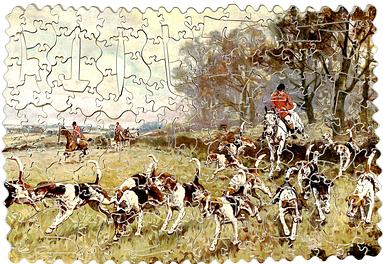
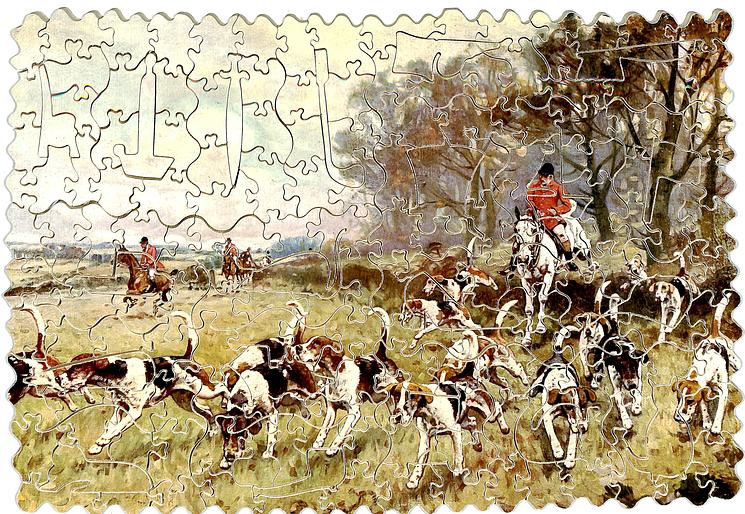
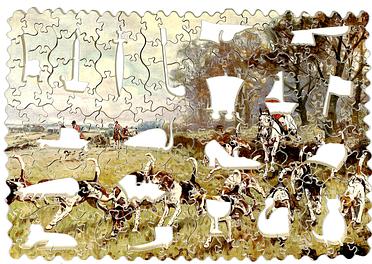
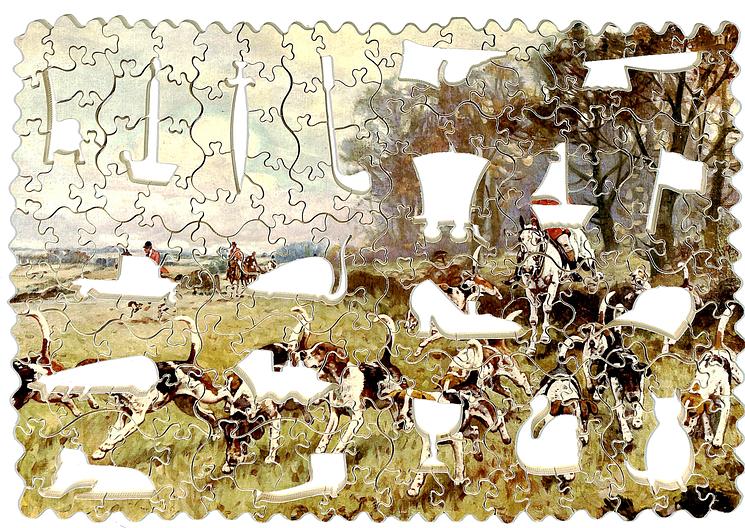
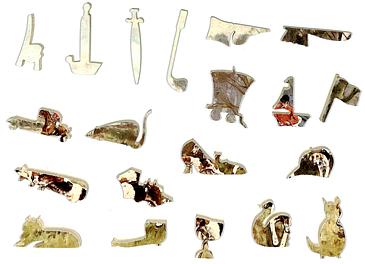
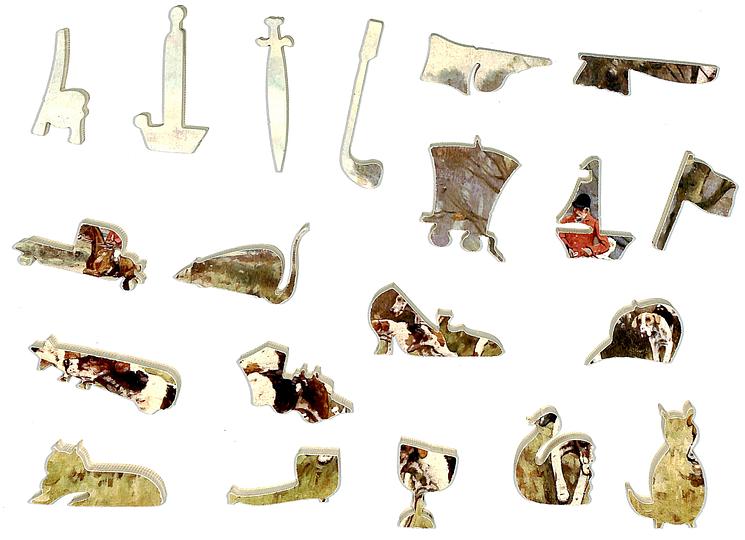


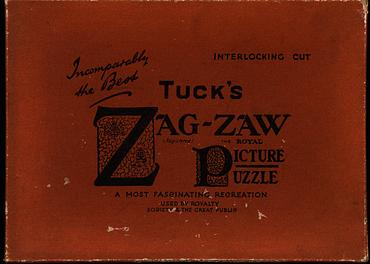
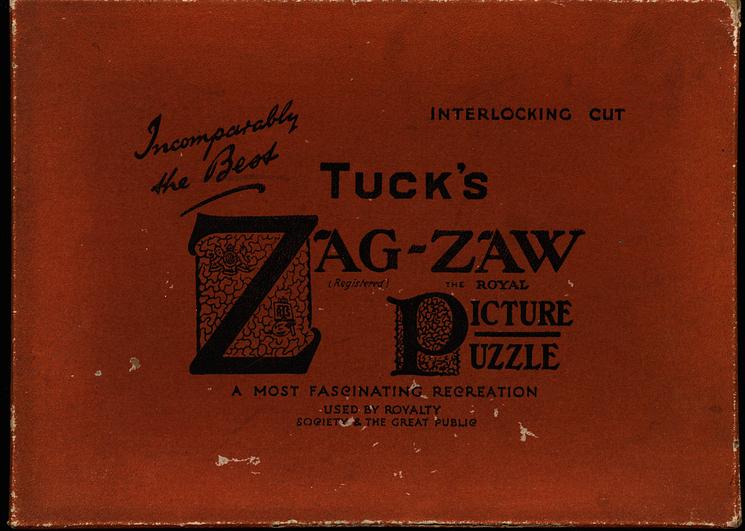
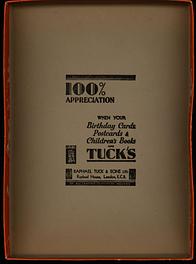
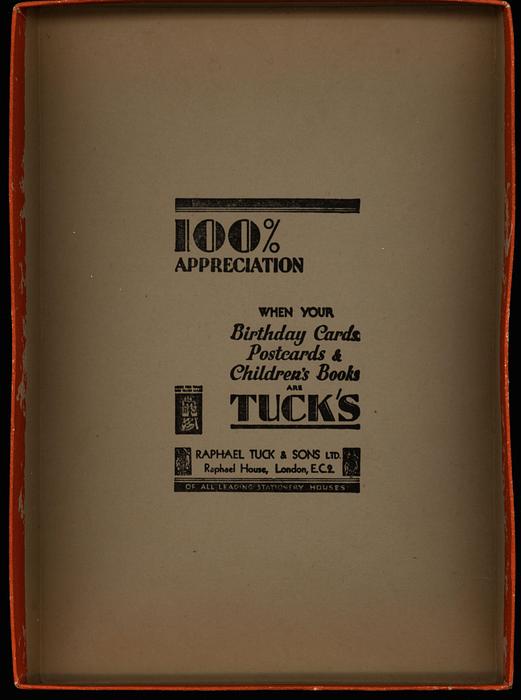
|
165 pieces, wooden, disguised edges, figurals, complete with box, interlocking style, also comes as a Tuck print and as Tuck postcards numbers 9575 and 3579
|
|
|
|
Zag-Zaw line of puzzles was first produced in 1909, most incorporate figurals or whimsies, sold in red, orange, or occasionally green boxes with labels on the side or bottom of the box, most without guide pictures. Initially cut non-interlocking but by 1930's became more so. Puzzles have a different cuts so that the same image will come in several versions which means that missing pieces can not be taken from other puzzles with the same image. The puzzle labels are often hand written and come with minor variations in titles and details. Some have a DESIGN category on the label. From my readings this refers to the style of cut, wavy lines, figurals, etc. See also Bob Armstrong's website on old jigsaw puzzles
|
GILBERT WRIGHT
|
|
11 1/2 x 8 in.
|
|
| ||||
| 331 |
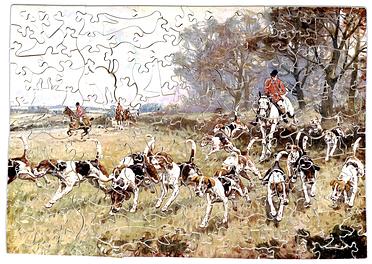
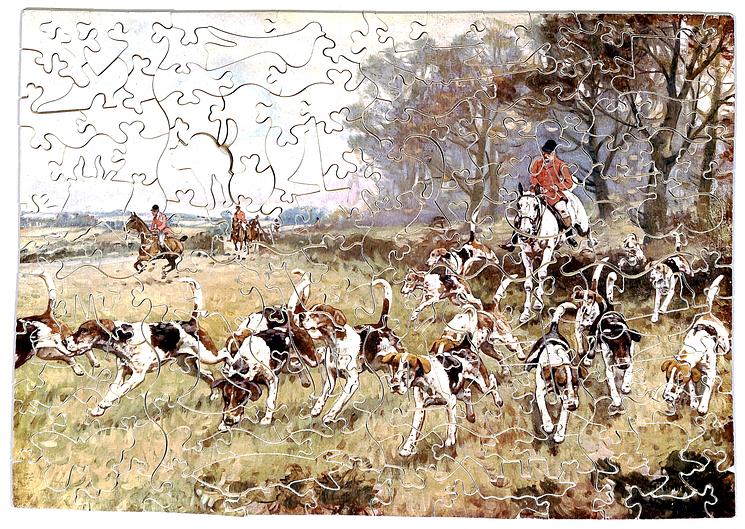
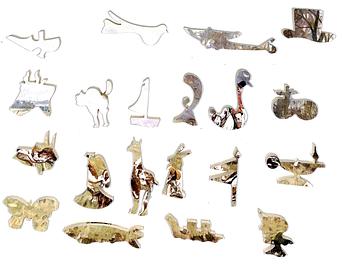
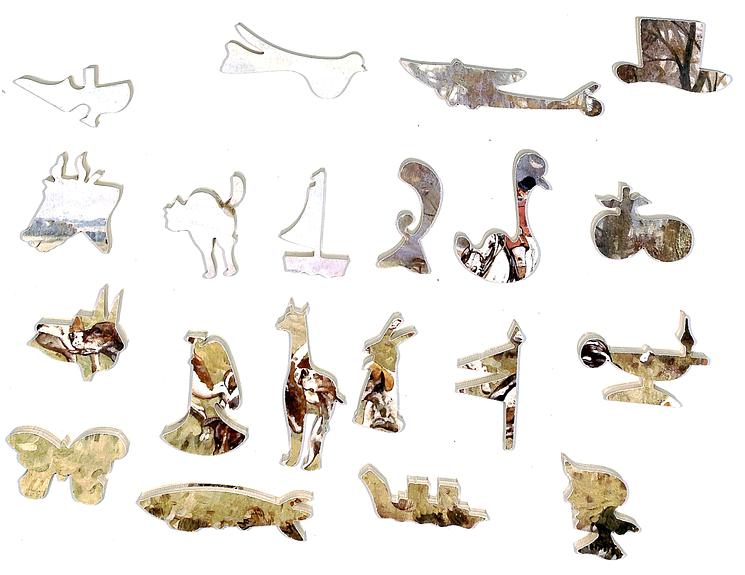
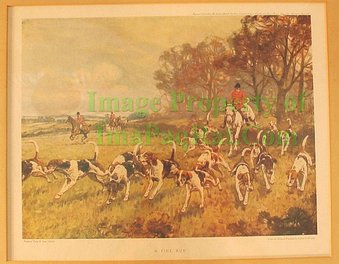
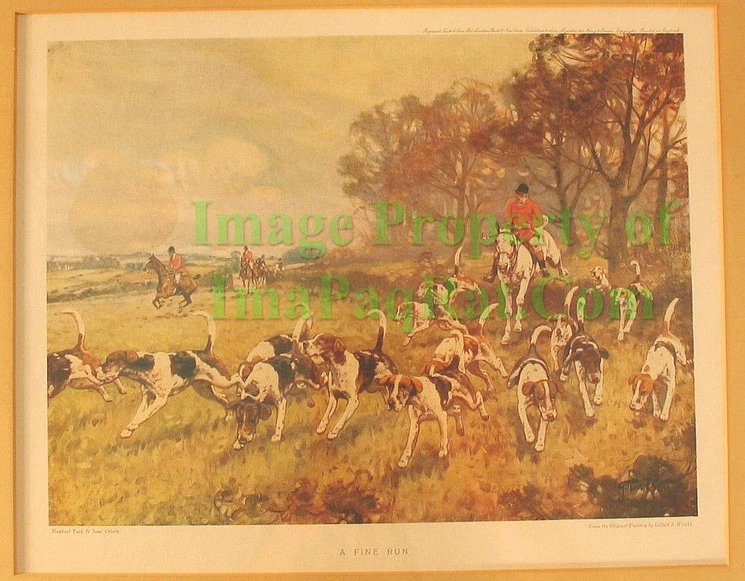
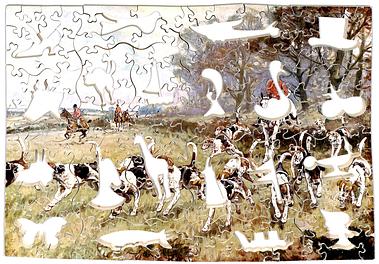

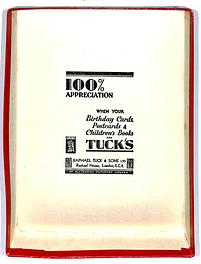
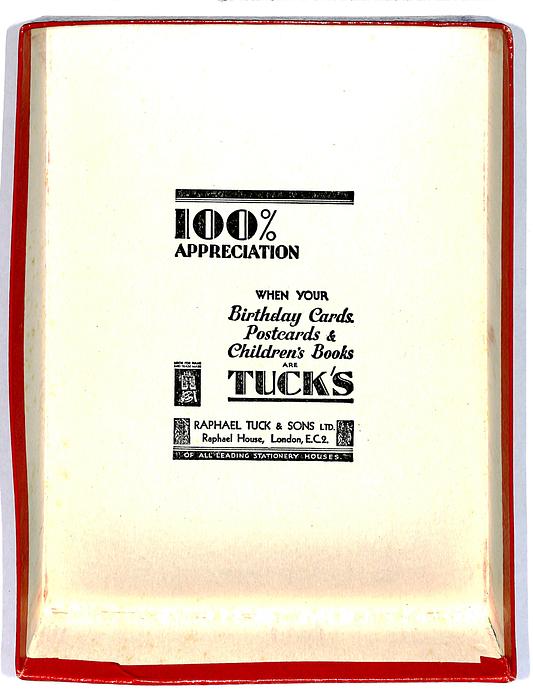
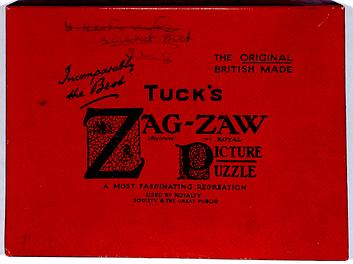



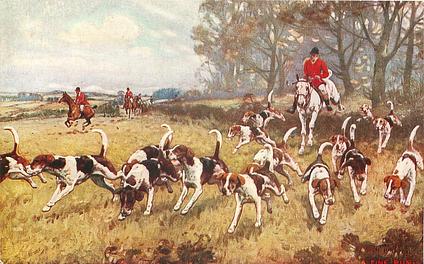
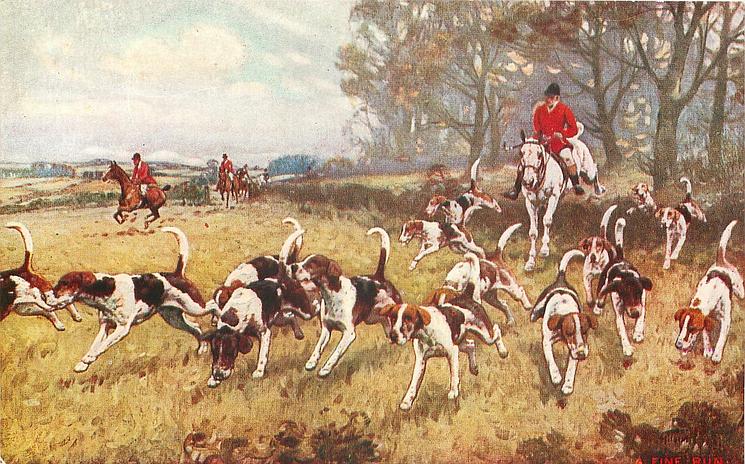
|
165 pieces, wooden, figurals, complete with box, one figural broken but glued, interlocking style, also comes as a Tuck print and as Tuck postcards numbers 9575 and 3579
|
|
|
|
Zag-Zaw line of puzzles was first produced in 1909, most incorporate figurals or whimsies, sold in red, orange, or occasionally green boxes with labels on the side or bottom of the box, most without guide pictures. Initially cut non-interlocking but by 1930's became more so. Puzzles have a different cuts so that the same image will come in several versions which means that missing pieces can not be taken from other puzzles with the same image. The puzzle labels are often hand written and come with minor variations in titles and details. Some have a DESIGN category on the label. From my readings this refers to the style of cut, wavy lines, figurals, etc. See also Bob Armstrong's website on old jigsaw puzzles
|
G. WRIGHT
|
|
11 3/4 x 8 in.
|
|
| ||||
| 332 |
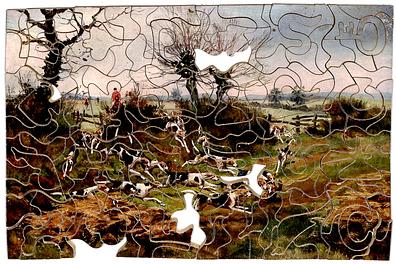
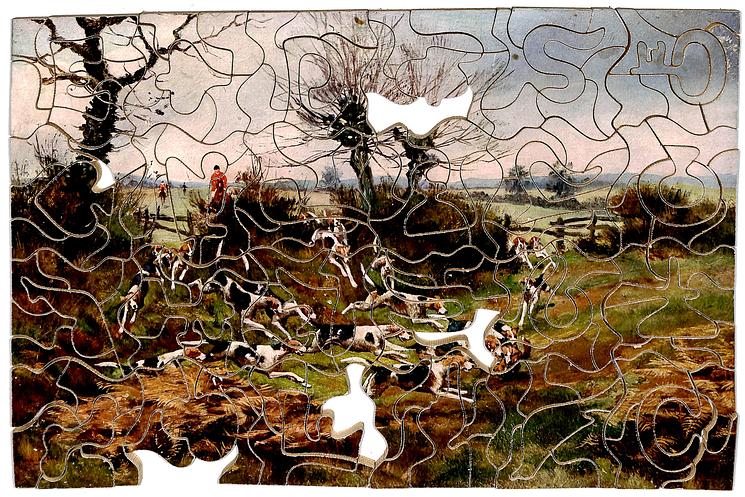
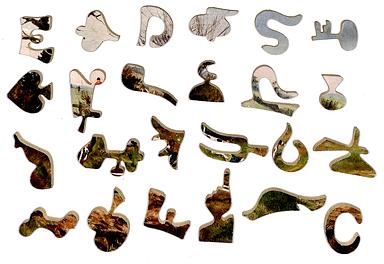

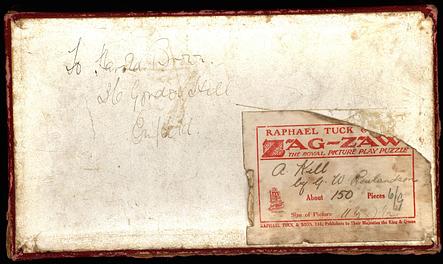
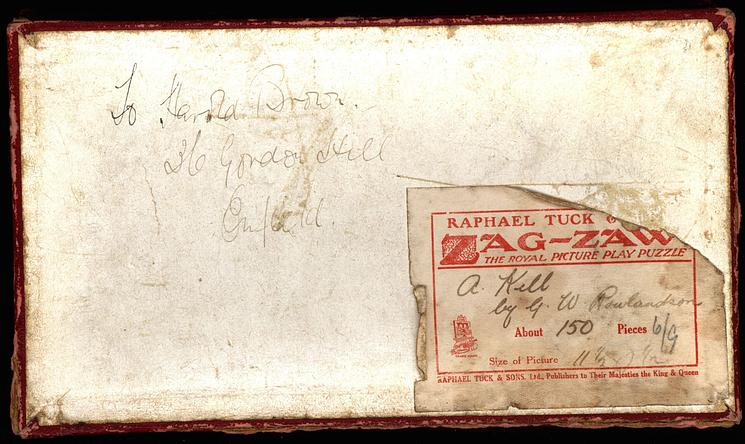
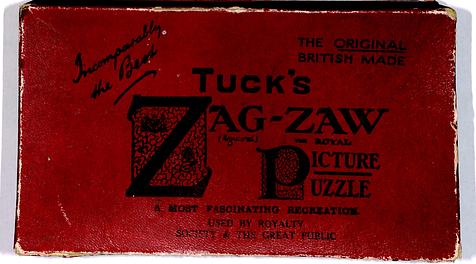
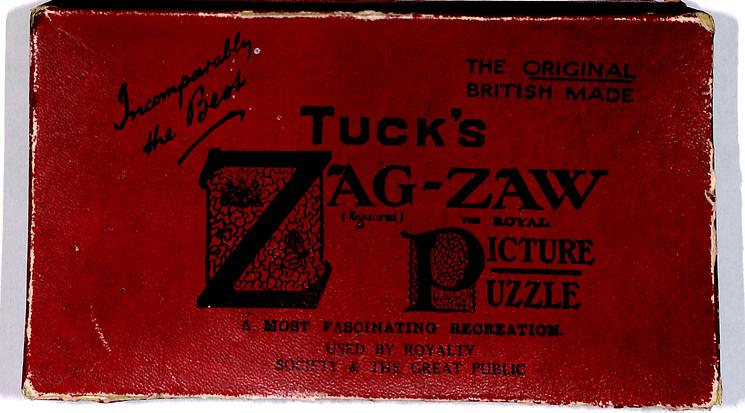

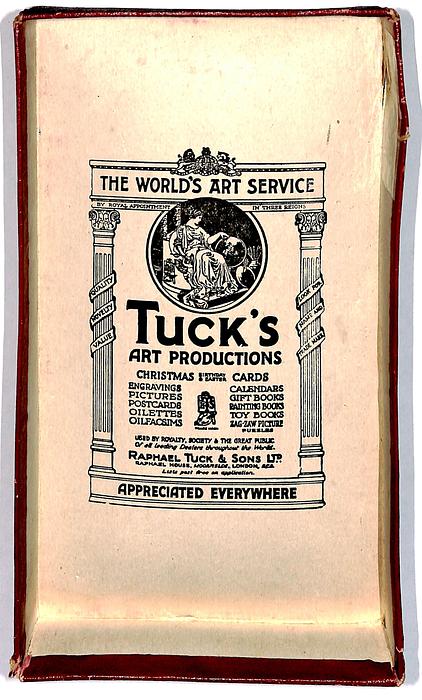
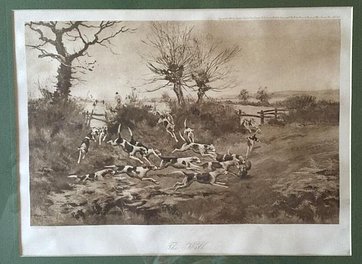
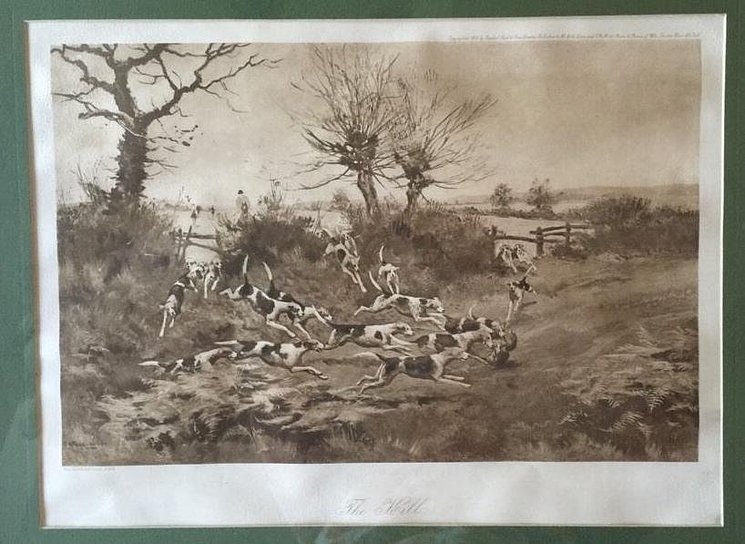
|
about 150 pieces, wooden, figurals, with box, four missing pieces, push fit style, also comes as a print
|
|
|
|
Zag-Zaw line of puzzles was first produced in 1909, most incorporate figurals or whimsies, sold in red, orange, or occasionally green boxes with labels on the side or bottom of the box, most without guide pictures. Initially cut non-interlocking but by 1930's became more so. Puzzles have a different cuts so that the same image will come in several versions which means that missing pieces can not be taken from other puzzles with the same image. The puzzle labels are often hand written and come with minor variations in titles and details. Some have a DESIGN category on the label. From my readings this refers to the style of cut, wavy lines, figurals, etc. See also Bob Armstrong's website on old jigsaw puzzles
|
G.D. ROWLANDSON
|
|
11 3/4 x 8 in.
|
|
| ||||
| 333 |
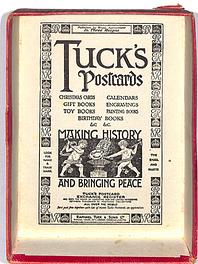

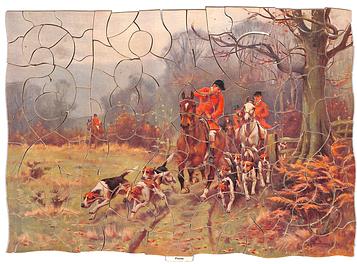
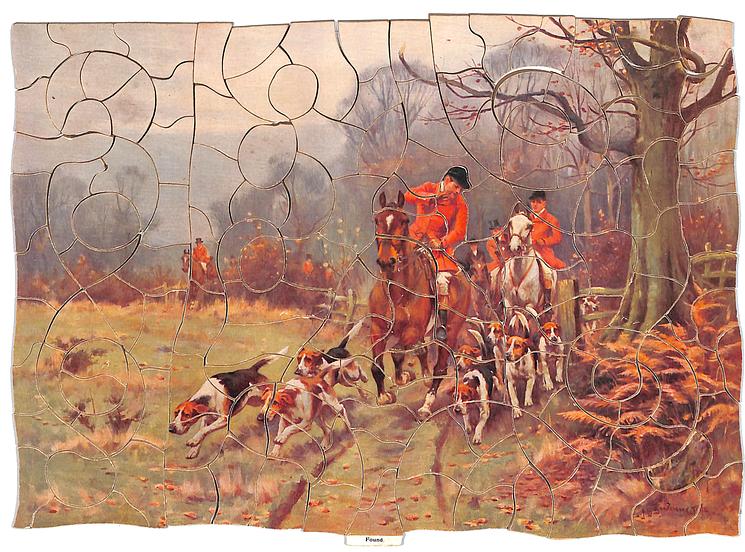
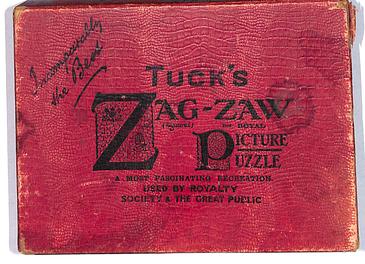
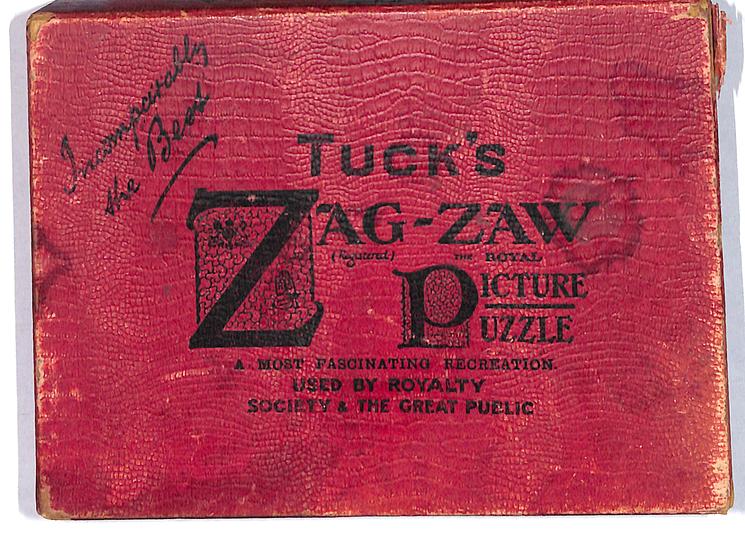

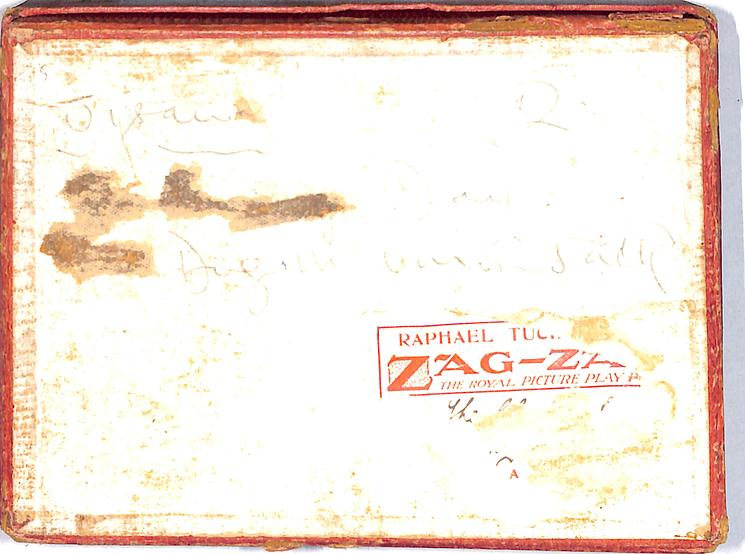
|
144 pieces, wooden, no figurals but interesting circular designs, complete with box, no label on box but on puzzle, non interlocking push fit style, wavy edges
|
|
|
|
Zag-Zaw line of puzzles was first produced in 1909, most incorporate figurals or whimsies, sold in red, orange, or occasionally green boxes with labels on the side or bottom of the box, most without guide pictures. Initially cut non-interlocking but by 1930's became more so. Puzzles have a different cuts so that the same image will come in several versions which means that missing pieces can not be taken from other puzzles with the same image. The puzzle labels are often hand written and come with minor variations in titles and details. Some have a DESIGN category on the label. From my readings this refers to the style of cut, wavy lines, figurals, etc. See also Bob Armstrong's website on old jigsaw puzzles
|
|
|
10 x 7 in.
|
|
| ||||
| 334 |

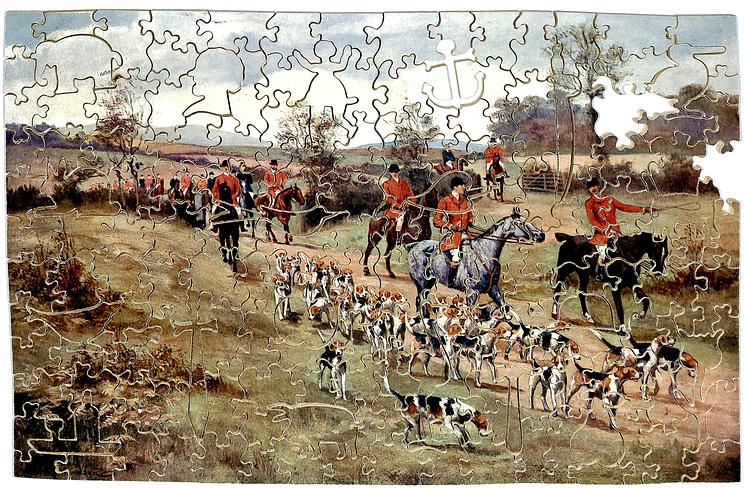
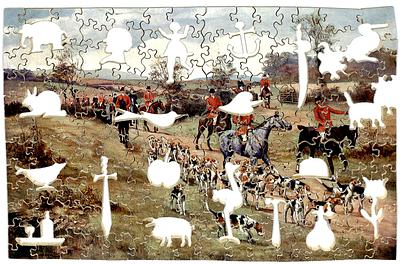
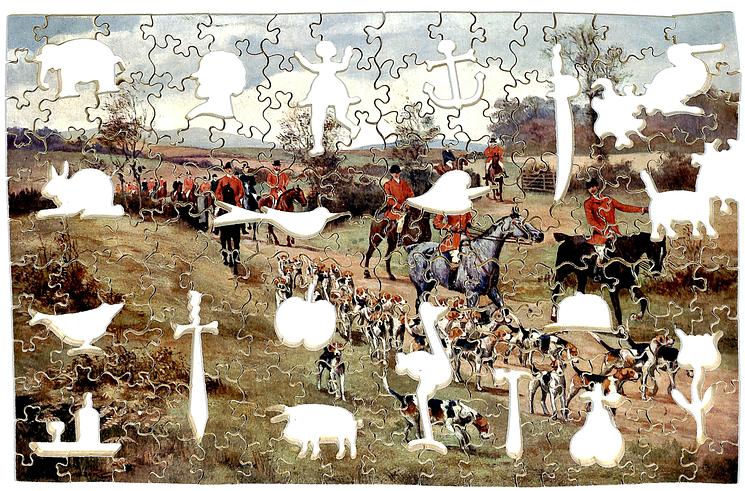


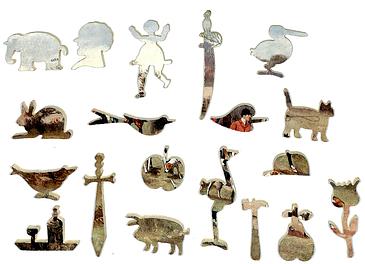
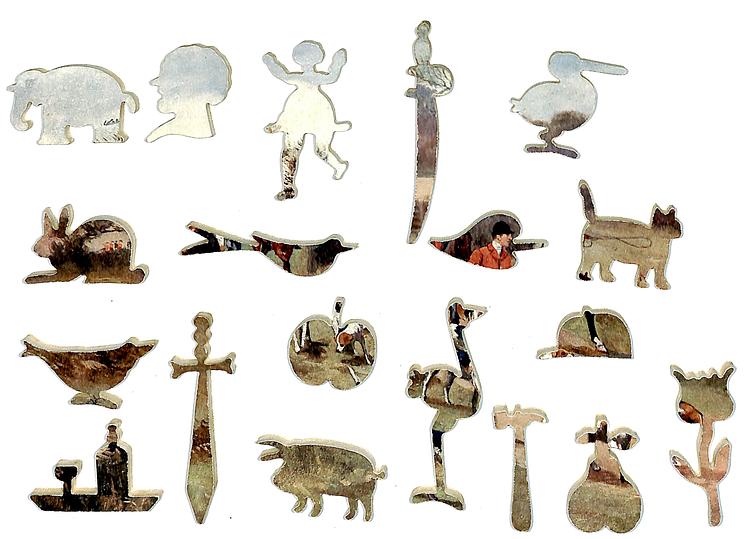
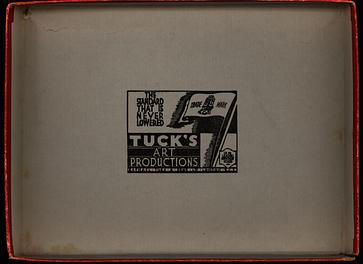

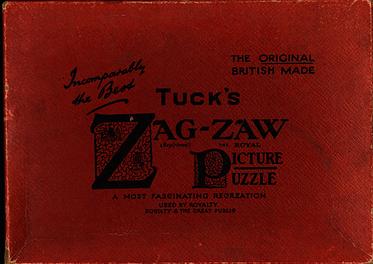
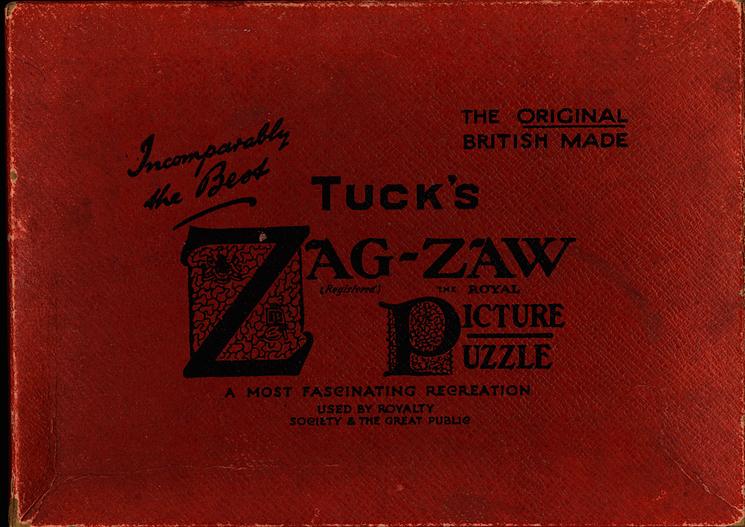
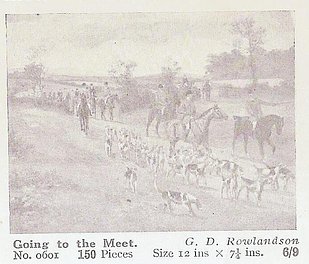

|
about 165 pieces, wooden, figurals, three missing pieces, with box, interlocking style, listed and described in the catalogs as 0601,
|
|
|
|
Zag-Zaw line of puzzles was first produced in 1909, most incorporate figurals or whimsies, sold in red, orange, or occasionally green boxes with labels on the side or bottom of the box, most without guide pictures. Initially cut non-interlocking but by 1930's became more so. Puzzles have a different cuts so that the same image will come in several versions which means that missing pieces can not be taken from other puzzles with the same image. The puzzle labels are often hand written and come with minor variations in titles and details. Some have a DESIGN category on the label. From my readings this refers to the style of cut, wavy lines, figurals, etc. See also Bob Armstrong's website on old jigsaw puzzles
|
G.D. ROWLANDSON
|
|
11 3/4 x 7 1/2 in.
|
|
| ||||
| 335 |
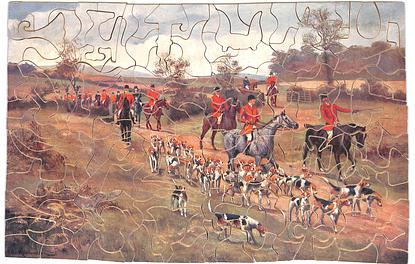

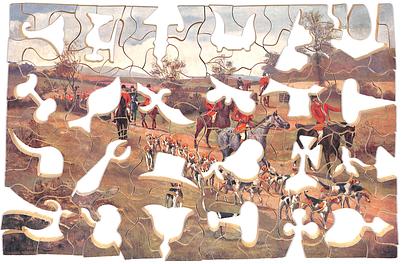
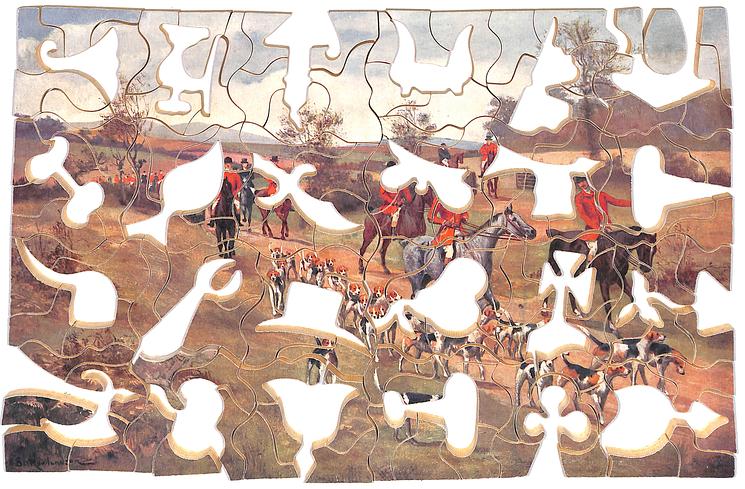
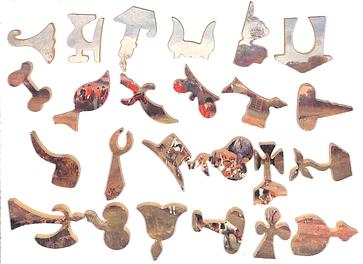

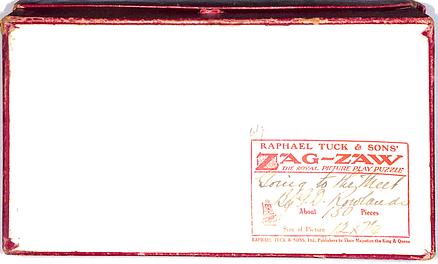

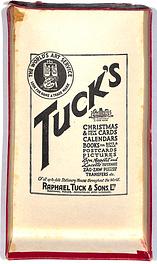
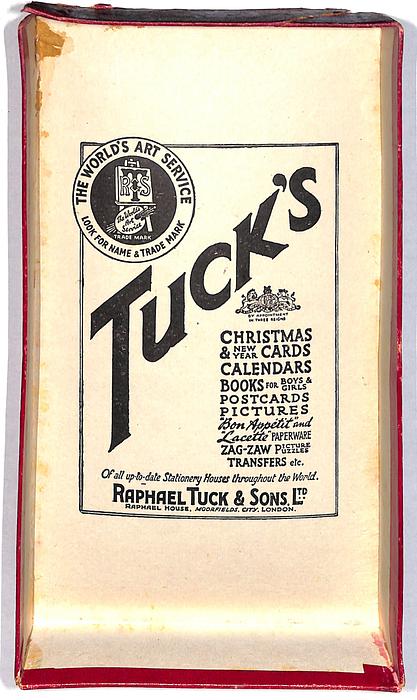
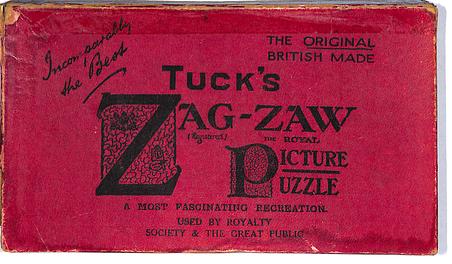
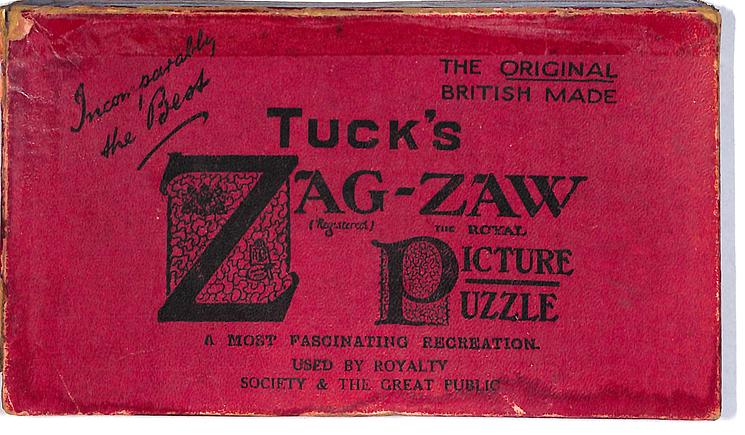
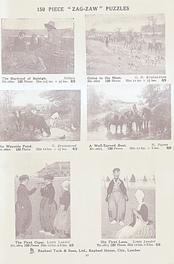
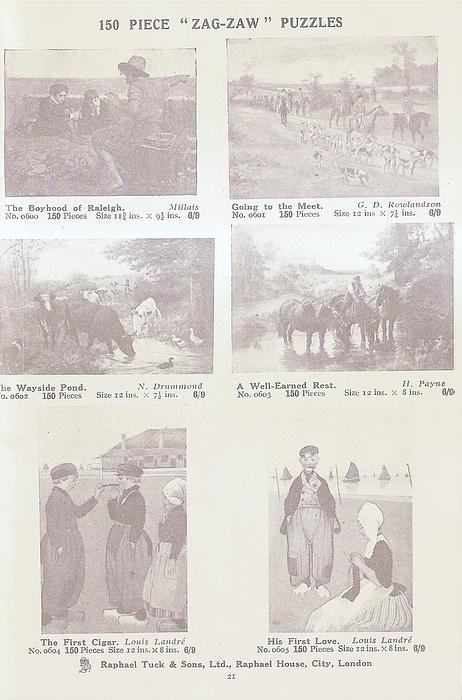
|
about 150 pieces, wooden, figurals, complete with box, push fit style, listed and described in the catalogs as 0601,
|
|
|
|
Zag-Zaw line of puzzles was first produced in 1909, most incorporate figurals or whimsies, sold in red, orange, or occasionally green boxes with labels on the side or bottom of the box, most without guide pictures. Initially cut non-interlocking but by 1930's became more so. Puzzles have a different cuts so that the same image will come in several versions which means that missing pieces can not be taken from other puzzles with the same image. The puzzle labels are often hand written and come with minor variations in titles and details. Some have a DESIGN category on the label. From my readings this refers to the style of cut, wavy lines, figurals, etc. See also Bob Armstrong's website on old jigsaw puzzles
|
G.D. ROWLANDSON
|
|
11 1/2 x 7 1/2 in.
|
|
| ||||
| 336 |
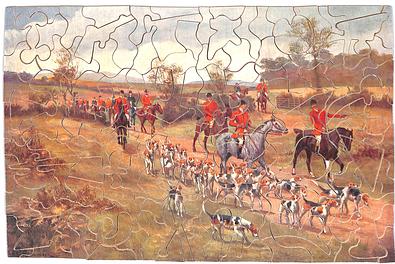
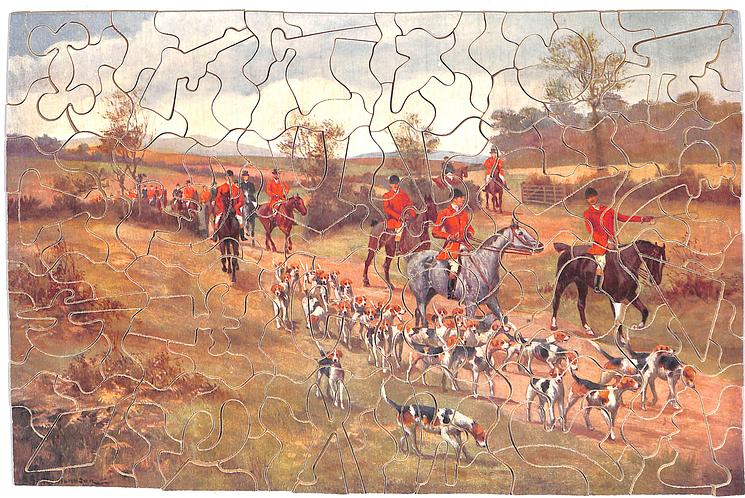
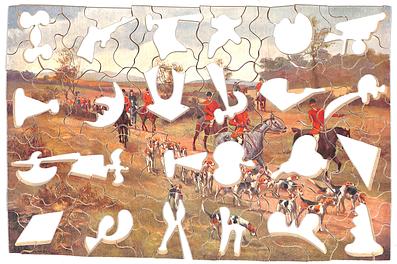
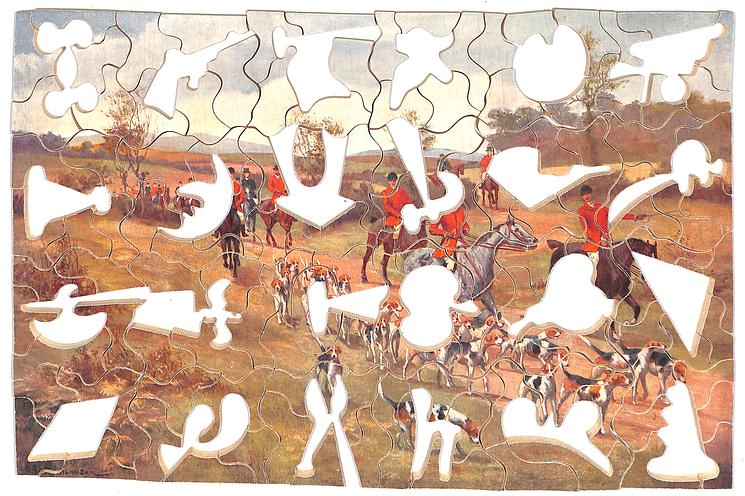


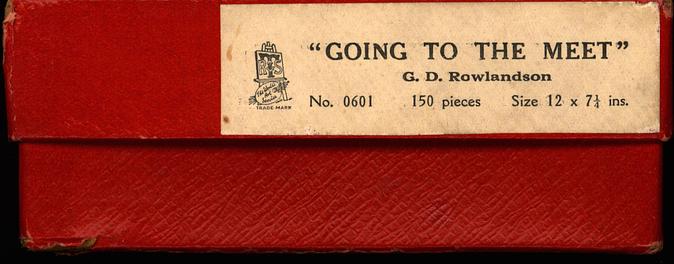
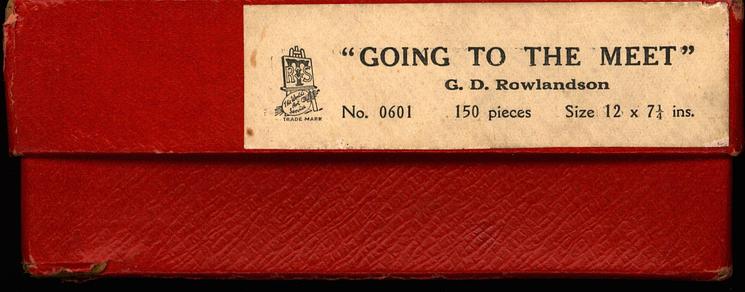
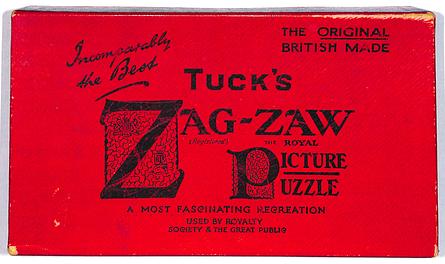
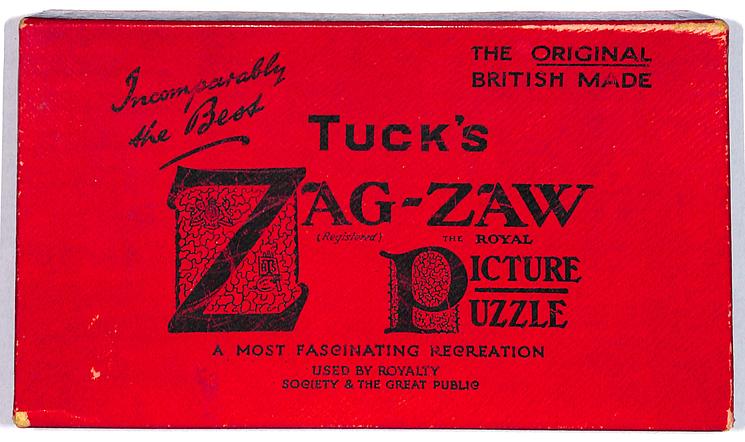
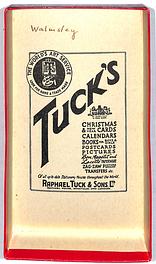

|
about 150 pieces, wooden, figurals, complete with box, one missing nib, push fit style, listed and described in the catalogs as 0601,
|
|
|
|
Zag-Zaw line of puzzles was first produced in 1909, most incorporate figurals or whimsies, sold in red, orange, or occasionally green boxes with labels on the side or bottom of the box, most without guide pictures. Initially cut non-interlocking but by 1930's became more so. Puzzles have a different cuts so that the same image will come in several versions which means that missing pieces can not be taken from other puzzles with the same image. The puzzle labels are often hand written and come with minor variations in titles and details. Some have a DESIGN category on the label. From my readings this refers to the style of cut, wavy lines, figurals, etc. See also Bob Armstrong's website on old jigsaw puzzles
|
G.D. ROWLANDSON
|
|
11 1/2 x 7 1/2 in.
|
|
| ||||
| 337 |
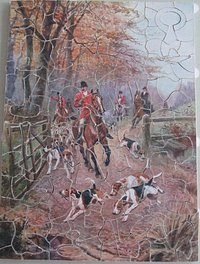

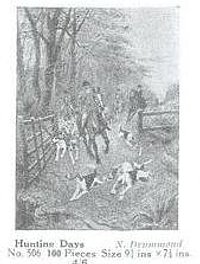
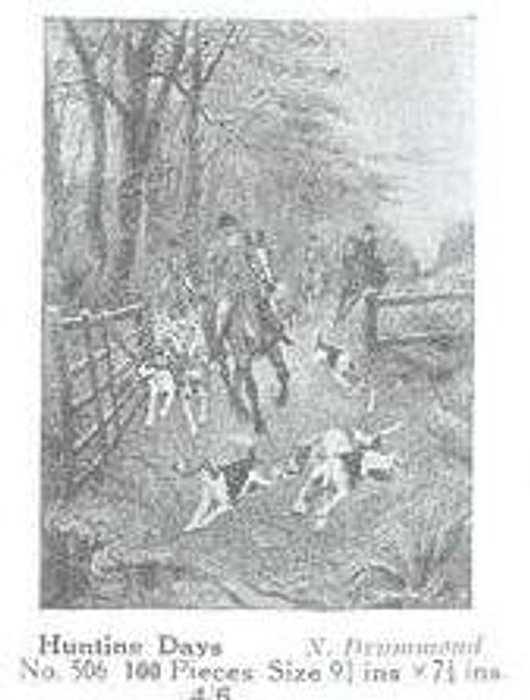
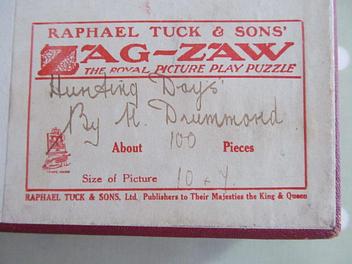

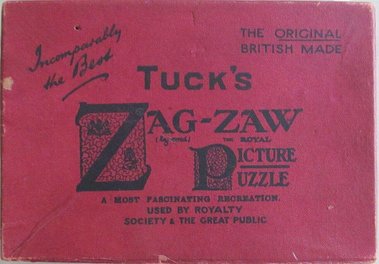
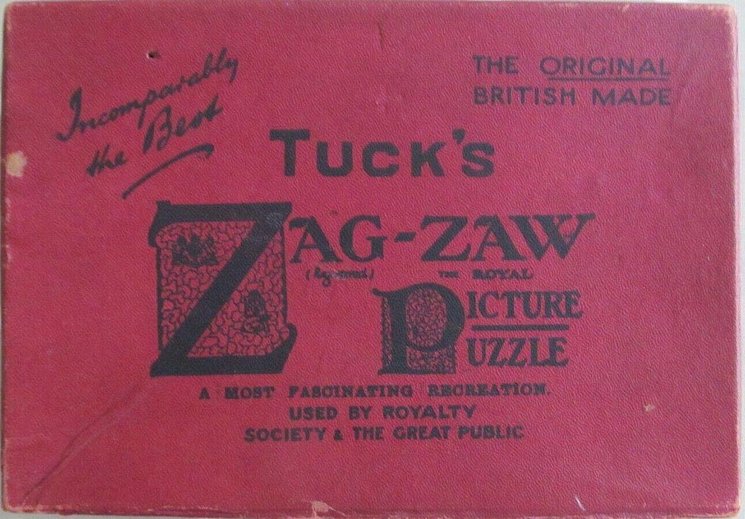
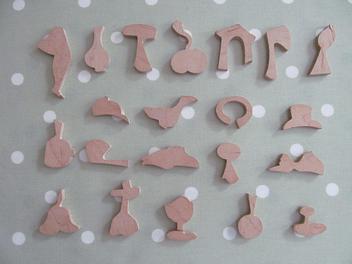

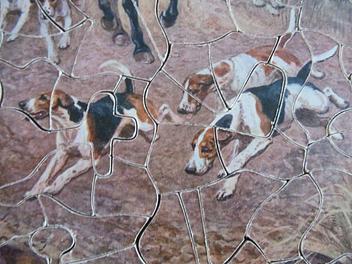
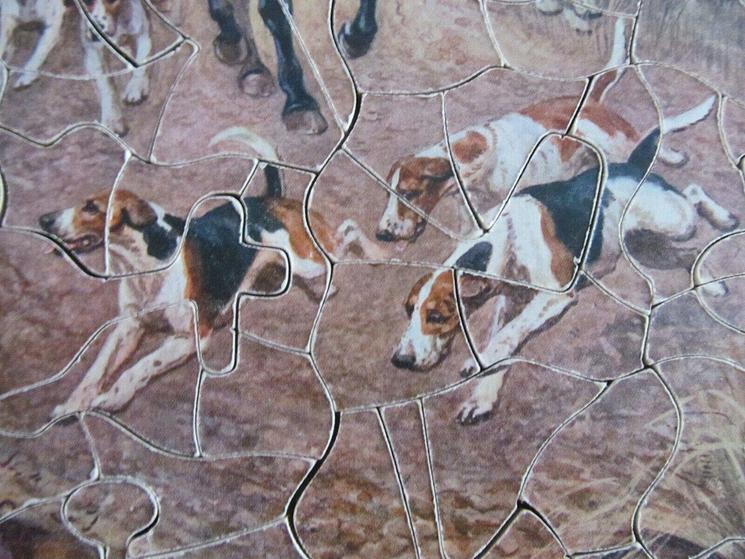
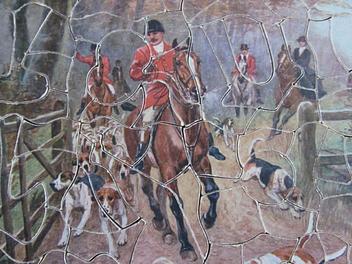
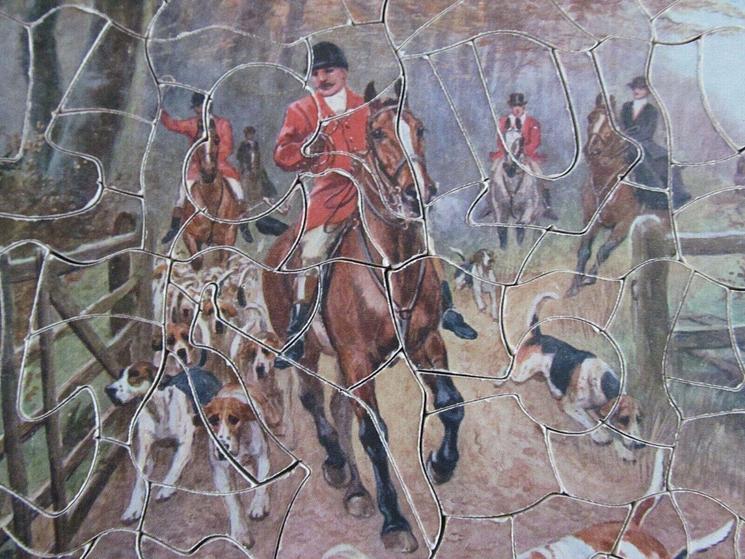
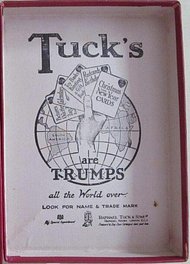
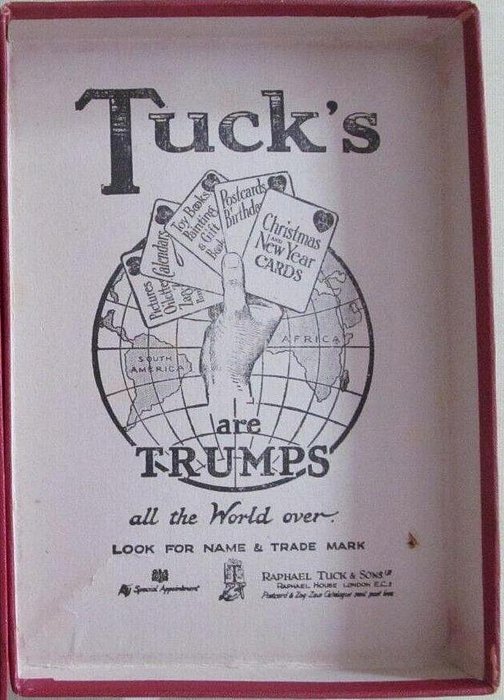
|
100 pieces, wooden, figurals, with box, complete, push fit style, described and listed in the catalogs as 506, a very similar image also comes with this same title by the same artist
|
|
|
|
Zag-Zaw line of puzzles was first produced in 1909, most incorporate figurals or whimsies, sold in red, orange, or occasionally green boxes with labels on the side or bottom of the box, most without guide pictures. Initially cut non-interlocking but by 1930's became more so. Puzzles have a different cuts so that the same image will come in several versions which means that missing pieces can not be taken from other puzzles with the same image. The puzzle labels are often hand written and come with minor variations in titles and details. Some have a DESIGN category on the label. From my readings this refers to the style of cut, wavy lines, figurals, etc. See also Bob Armstrong's website on old jigsaw puzzles
|
NORAH DRUMMOND
|
|
7 x 10 in.
|
|
| ||||
| 338 |
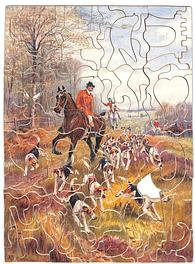
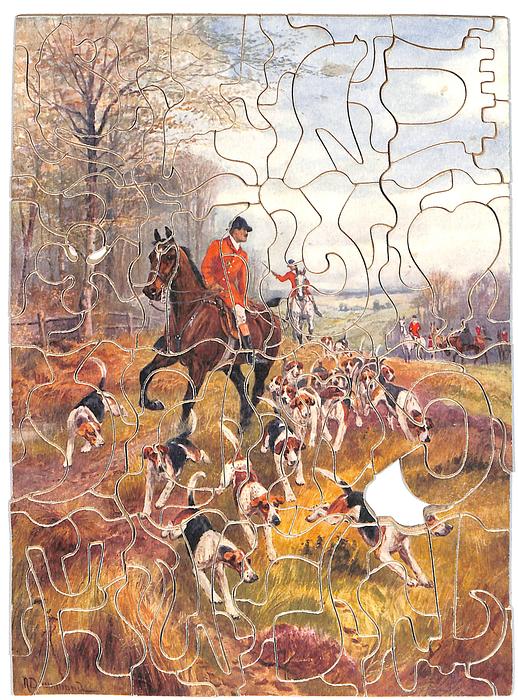
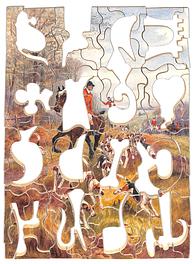

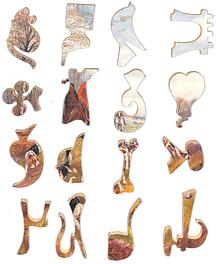
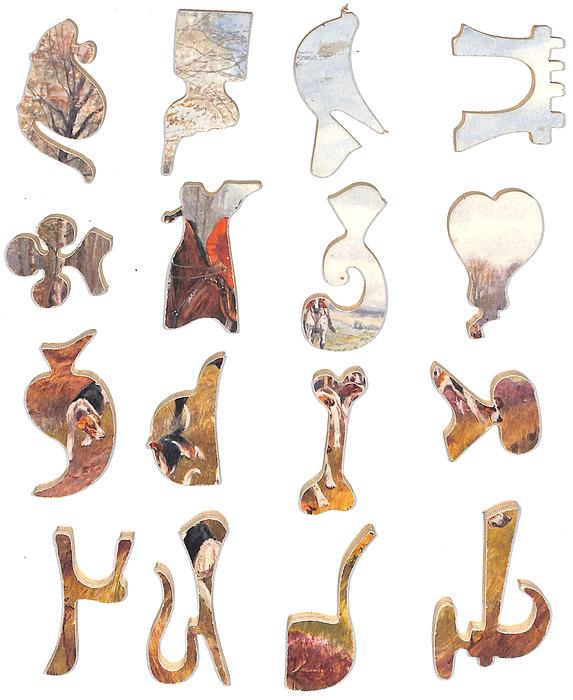
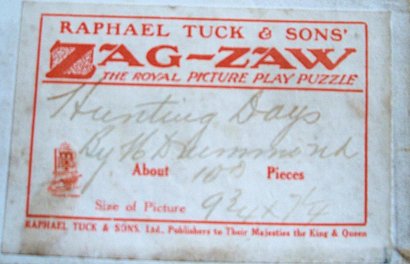

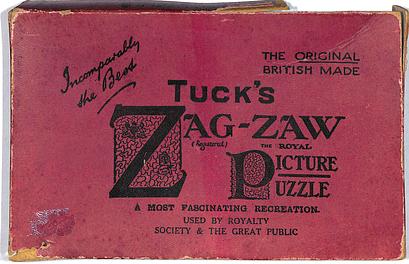

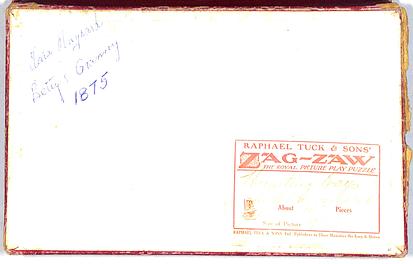
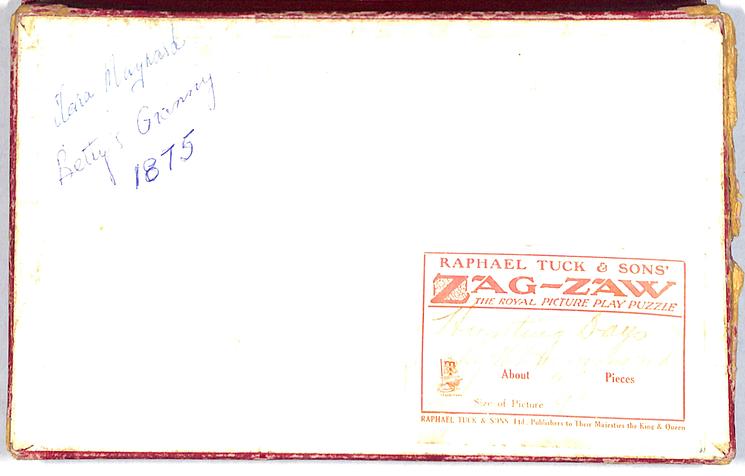
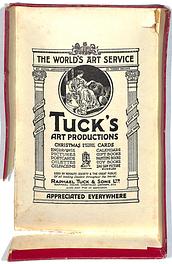

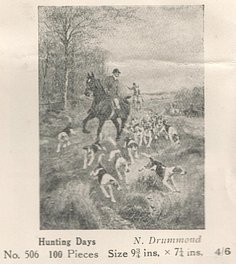

|
100 pieces, wooden, figurals, with box, two missing nibs, two missing pieces, push fit style, a very similar image also comes with this same title by the same artist
|
|
|
|
Zag-Zaw line of puzzles was first produced in 1909, most incorporate figurals or whimsies, sold in red, orange, or occasionally green boxes with labels on the side or bottom of the box, most without guide pictures. Initially cut non-interlocking but by 1930's became more so. Puzzles have a different cuts so that the same image will come in several versions which means that missing pieces can not be taken from other puzzles with the same image. The puzzle labels are often hand written and come with minor variations in titles and details. Some have a DESIGN category on the label. From my readings this refers to the style of cut, wavy lines, figurals, etc. See also Bob Armstrong's website on old jigsaw puzzles
|
N. DRUMMOND
|
|
7 x 9 3/4 in.
|
|
| ||||
| 339 |
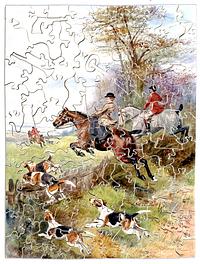
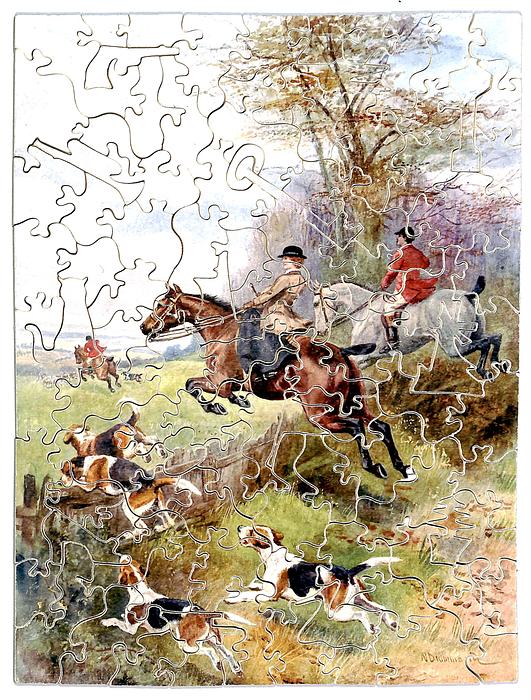


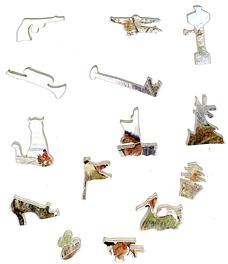
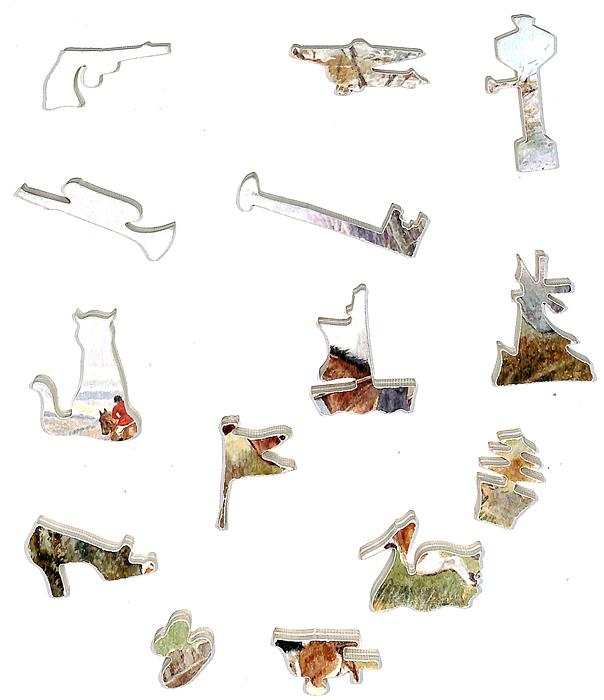


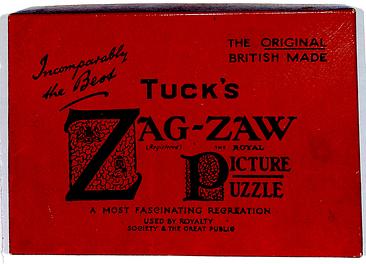

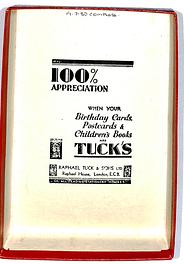
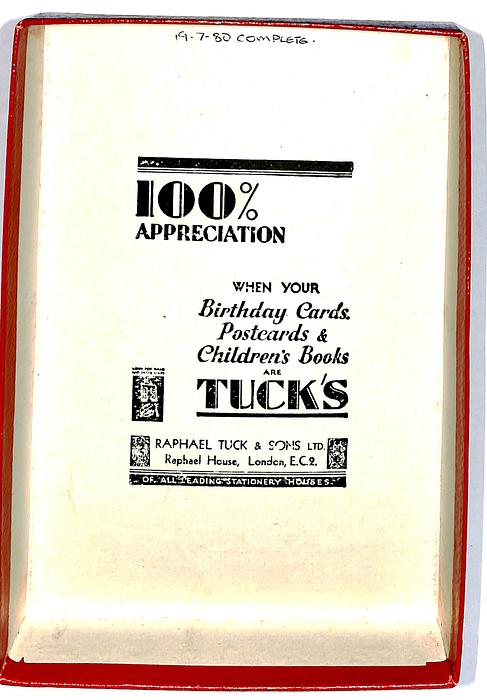
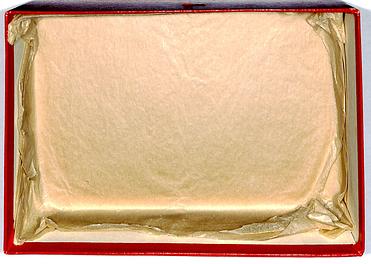

|
110 pieces, wooden, with figurals, complete with box, interlocking style,
|
|
|
|
Zag-Zaw line of puzzles was first produced in 1909, most incorporate figurals or whimsies, sold in red, orange, or occasionally green boxes with labels on the side or bottom of the box, most without guide pictures. Initially cut non-interlocking but by 1930's became more so. Puzzles have a different cuts so that the same image will come in several versions which means that missing pieces can not be taken from other puzzles with the same image. The puzzle labels are often hand written and come with minor variations in titles and details. Some have a DESIGN category on the label. From my readings this refers to the style of cut, wavy lines, figurals, etc. See also Bob Armstrong's website on old jigsaw puzzles
|
N. DRUMMOND
|
|
7 1/4 x 9 1/2 in.
|
|
| ||||
| 340 |
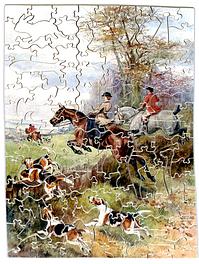

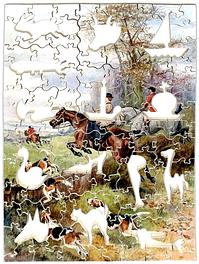

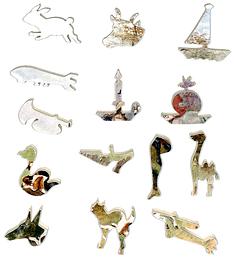
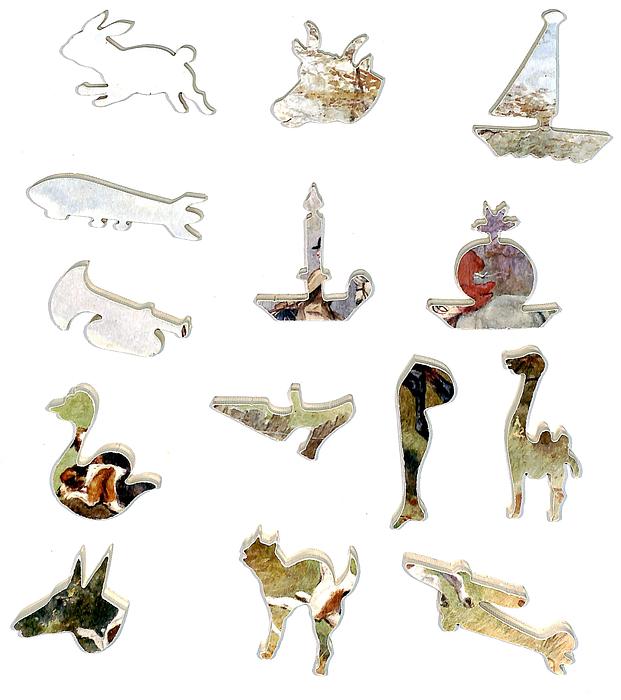
|
118 pieces, wooden, figurals, complete, no box, interlocking cut,
|
|
|
|
Zag-Zaw line of puzzles was first produced in 1909, most incorporate figurals or whimsies, sold in red, orange, or occasionally green boxes with labels on the side or bottom of the box, most without guide pictures. Initially cut non-interlocking but by 1930's became more so. Puzzles have a different cuts so that the same image will come in several versions which means that missing pieces can not be taken from other puzzles with the same image. The puzzle labels are often hand written and come with minor variations in titles and details. Some have a DESIGN category on the label. From my readings this refers to the style of cut, wavy lines, figurals, etc. See also Bob Armstrong's website on old jigsaw puzzles
|
NORAH DRUMMOND
|
|
7 1/4 x 9 3/4 in
|
|
|